
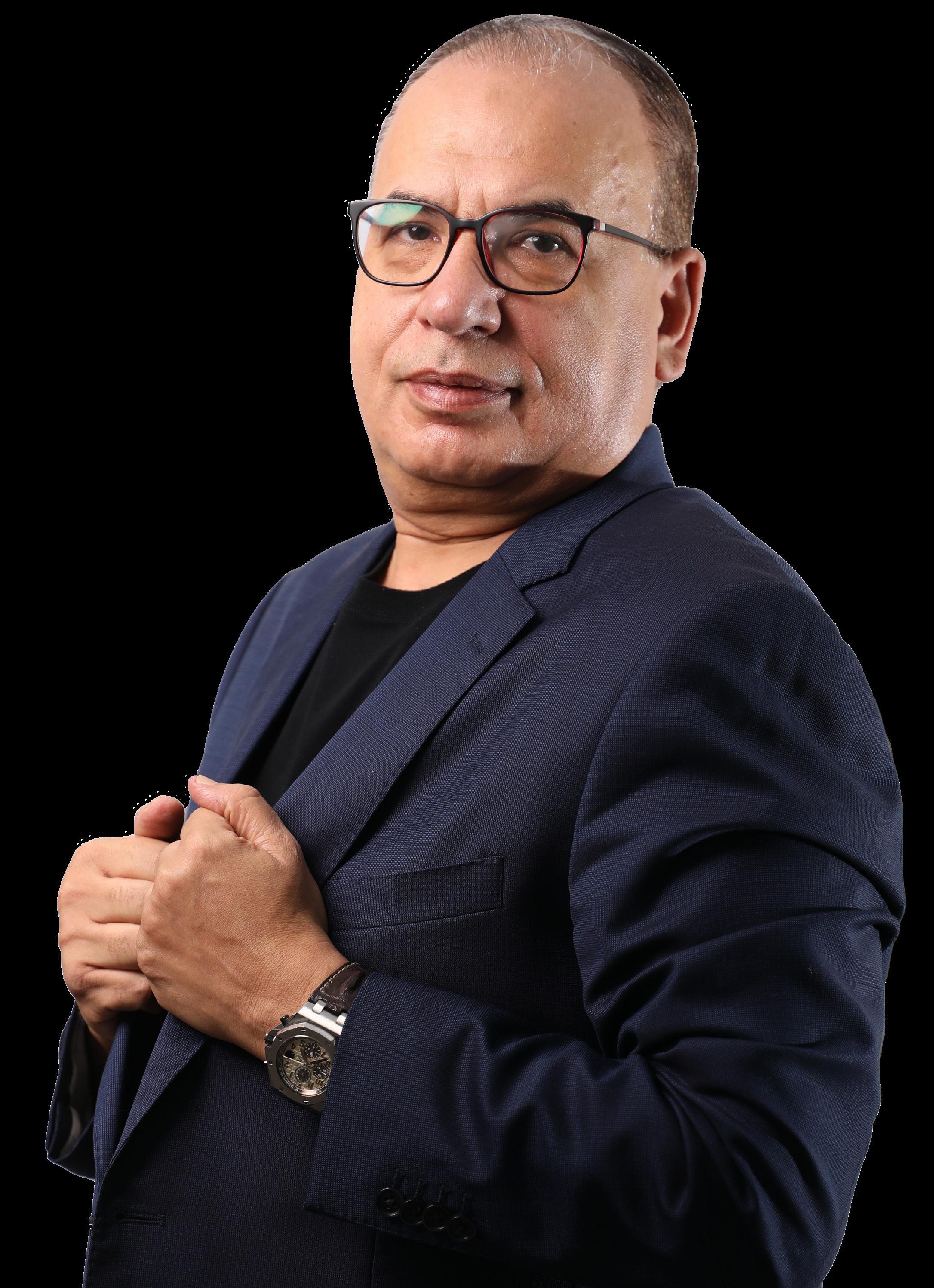
AMIN Senior Vice President,
Exper ience the award-winning #WOWLexar storage & memor y solutions















AMIN Senior Vice President,
Exper ience the award-winning #WOWLexar storage & memor y solutions












THE CHANGE TO FUTURISTIC BUSINESS
PUBLISHER
TUSHAR SAHOO
tushar@gecmediagroup.com
CO-FOUNDER & CEO
RONAK SAMANTARAY ronak@gecmediagroup.com
MANAGING EDITOR
Jeevan Thankappan
jeevan@gcemediagroup.com
ASSISTANT EDITOR
SEHRISH TARIQ
sehrish@gcemediagroup.com
GLOBAL HEAD, CONTENT AND STRATEGIC ALLIANCES
ANUSHREE DIXIT anushree@gecmediagroup.com
CHIEF COMMERCIAL OFFICER
RICHA S richa@gecmediagroup.com
PROJECT LEAD
JENNEFER LORRAINE MENDOZA jennefer@gecmediagroup.com
SALES AND ADVERTISING sales@gecmediagroup.com
CONTENT WRITER
KUMARI AMBIKA
IT MANAGER
VIJAY BAKSHI
DESIGN TEAM
CREATIVE LEAD
AJAY ARYA
Designers
SHADAB KHAN, JITESH KUMAR, SEJAL SHUKLA
PRODUCTION
RITURAJ SAMANTARAY
S.M. MUZAMIL
PRODUCTION CIRCULATION, SUBSCRIPTIONS info@gecmediagroup.com
DESIGNED BY

SUBSCRIPTIONS info@gecmediagroup.com
PRINTED BY
Al Ghurair Printing & Publishing LLC. Masafi Compound, Satwa, P.O.Box: 5613, Dubai, UAE
(UAE) Office No #115 First Floor , G2 Building Dubai Production City Dubai, United Arab Emirates Phone : +971 4 564 8684
(USA) 31 FOXTAIL LAN, MONMOUTH JUNCTION, NJ - 08852
UNITED STATES OF AMERICA Phone :+ 1 732 794 5918
A PUBLICATION LICENSED BY International Media Production Zone, Dubai, UAE @copyright 2013 Accent Infomedia. All rights reserved. while the publishers have made every effort to ensure the accuracyof all information in this magazine, they will not be held responsible for any errors therein.

Last month, I had the opportunity to attend two key events: Oracle’s CloudWorld in Las Vegas and our own World CIO 200 Summit finale in South Africa. If I were to pinpoint key takeaways from these events, it would be how deeply ingrained technologies like cloud and AI have become in enterprises. Today, every technology investment is shaped by business realities, and the mandate for tech leaders is to focus on driving positive business outcomes rather than implementing technology for its own sake. In virtually every industry, competitive advantage now hinges on how well organizations leverage information technology. I can’t think of any business that doesn’t use cloud in some form, and the Middle East is already home to all the major hyperscalers. While the initial elevator pitch for cloud revolved around cost savings, businesses now recognize it as the cornerstone of any transformation initiative. Multi-cloud strategies have also become a reality, as enterprises prefer not to put all their eggs in one basket. The good news is that major cloud service providers are increasingly collaborating. A case in point is OraWcle, which has announced partnerships with the likes of AWS and Google Cloud.
Artificial intelligence is another technology sweeping across all industries, with new use cases emerging rapidly. All major vendors are repackaging their offerings with AI embedded, and very soon, we might see the emergence of Chief AI Officers responsible for developing and executing AI strategies. In this issue of BT, we have spotlighted another quiet revolution taking the world of IT by storm: Low-code and no-code platforms. Given the record-breaking shortage of software developers in the world, these platforms have become a boon for enterprises looking to build and customise applications. Contrarty to the perception that LCNC isn’t meant for enterprise-grade apps, these platforms have evolved with sophisticated capabilities and can be used to build complex applications.
As you flip through the pages, you’d also find what some of the top-tier tech vendors will showcase at this year’s GITEX Global, which has now become a bellwether for emerging technologies.
If you are attending the region’s tech show, come and visit us at Hall 23, Stand 18A. Enjoy reading.
Jeevan Thankappan








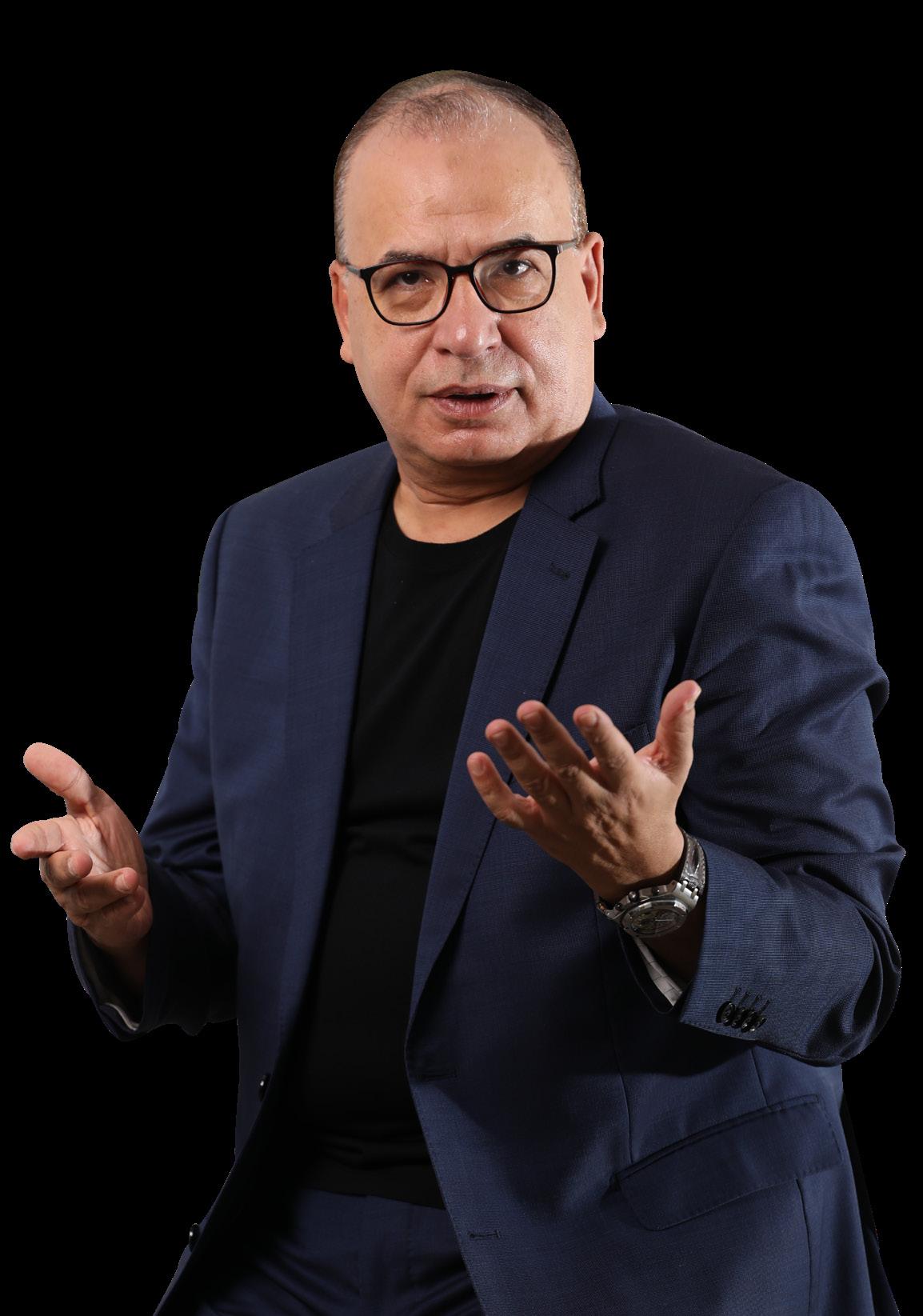

WeRide and Uber Technologies has announced a strategic partnership to bring WeRide’s autonomous vehicles onto the Uber platform, beginning in the United Arab Emirates.
The partnership is expected to launch first in Abu Dhabi later this year. A dedicated number of WeRide vehicles will be made available to consumers using the Uber app. After launch, when a rider requests a qualifying
ride on the Uber app, they may be presented with the option to have their trip fulfilled by a WeRide autonomous vehicle. The partnership does not contemplate any launches in the United States or China.
The partnership agreement was signed by Andrew Macdonald, Senior Vice President of Mobility & Business operations of Uber, and Hua Zhong, Senior Vice President of WeRide. Uber CEO Dara Khosrowshahi and WeRide Founder and CEO Tony Han witnessed the signing ceremony of the agreement.
WeRide currently operates the largest robotaxi fleet in the UAE,
where residents can access its robotaxi services through the TXAI app. In addition, in July 2023, WeRide was granted the UAE’s first and only national license for self-driving vehicles, enabling it to test and operate its autonomous vehicles on public roads across the entire country.
Tony Han, founder and CEO of WeRide said, “We are honored to partner with Uber to continue to bring our technology to global markets. Together, we aim to combine our collective experience and expertise to deliver much needed, affordable, sustainable and safe mobility solutions to a global audience.”
Gartner predicts that by 2026, at least 500 million smartphone users will be regularly making verifiable claims using a digital identity wallet (DIW).
Identity verification (IDV) in the form of a user taking a picture of their identity document and a selfie is commonly used today. It establishes confidence in the identity of a person during a digital interaction when curated credentials do not exist, are not available or do not provide sufficient assurance. However, due to challenges with the traditional IDV model, solutions based on portable digital identity (PDI) have emerged.
“The market is entering a transition period as PDI solutions are starting to mature, which in the next five years, will reduce the demand for standalone IDV,” said Akif Khan, VP Analyst at

Gartner.
The current IDV model of a user being asked to do the ID-plusselfie process repeatedly, is not ideal. “The processes in place today are focused and limited to core identity data (name, date of birth, address etc.). As more and more processes move online, there is a need to tie many other attributes to a user’s identity, such as educational or
workplace qualifications, proof of employment, not to mention healthcare data,” said Khan.
Portable Digital Identity Solutions to Start to Replace
Repeated Identity Verification
A PDI is best defined as a digital identity that contains all the necessary attributes for identifying someone in the digital world. PDI also means that the user maintains some level of control over security and privacy.

Dataiku’s survey reveals that GenAI is transforming enterprise operations and becoming integral to business strategies. Notably, 65% of respondents report positive returns on their GenAI projects, indicating both strategic foresight and financial benefits. Additionally, 90% of leaders are investing in GenAI, with 57% incorporating it into IT and data science budgets and 33% establishing new budgets specifically for GenAI initiatives. In May 2024, Dataiku and
Databricks surveyed 400 global senior AI professionals to uncover year-over-year trends in GenAI utilization, perceptions, investment strategies, and operational challenges since its 2023 report:
• Extreme worries over AI dropped sharply from 10% to 4%, suggesting an industry shift to a more moderate perspective.
• Over half (56%) of AI leaders believe the C-suite better understands the risks and benefits of AI, a 17% year-over-year increase, which closely correlates to increased budget allocations.
• Despite growing enthusiasm and strategic investments in GenAI, foundational obstacles to extracting the most value from analytics and AI continue to persist,
with data quality leading at 58%.
• Foundational obstacles have been compounded with emerging Gen-AIspecific barriers. The biggest and most present GenAI challenges for respondents include a lack of necessary resources (44%), employee knowledge deficiencies (28%), and IT and policy constraints (22%).
“As an industry, we’ve long talked about the last mile of AI and how to deliver value from the products that will drive the space forward. More than a third of companies now have a dedicated budget for GenAI, and it’s become evident how quickly they are embracing the technology and realizing strong returns on their investments,” said Conor Jensen, Global Field CDO of Dataiku.
IFZA has announced its partnership as the title sponsor of the 10th Annual World Free Zones Organization World Congress, which will be hosted under the patronage of His Highness Sheikh Mohammed bin Rashid Al Maktoum, Vice President and Prime Minister of the UAE and Ruler of Dubai.
This partnership marks IFZA’s continued commitment to being an integral part of the global event, scheduled to be held from 23 to 25 September 2024, at the Madinat Jumeirah Conference Centre, Dubai, UAE.
Focusing on the theme of “Zones and the Shifting Global Economic Structures: Unlocking
New Investment Avenues”, the congress will address key topics and priorities within the sector on a global scale.
Martin G. Pedersen, Chairman of IFZA, said “The World Free Zones Organization’s 10th World Congress represents a pivotal gathering for the global free zone community. Its presence in Dubai is testament to the UAE being a global economic powerhouse attracting significant foreign direct investment.
Dr. Samir Hamrouni, CEO of the World Free Zones Organization, said, “The World FZO’s World Congress has become a cornerstone event for

our global community, serving as a platform for dialogue, collaboration, and innovation. The 10th edition not only reflects our journey over the past decade but also sets the stage for the future, where free zones will continue to play a critical role in the shifting global economic landscape.”

This year at GITEX, TXOne Networks will showcase its groundbreaking OT defence framework designed to protect mission-critical assets across industries such as manufacturing, oil and gas, and critical infrastructure.
Visitors to TXOne Networks’ stand (H24-D70, Hall 24) will experience the innovative SageOne Cyber-Physical Systems (CPS) protection platform, along with a significant update to the Edge product line. The integration of AI into the Edge solutions simplifies security
configuration, reducing setup time while enhancing threat detection accuracy with fewer false positives. In addition to product demonstrations, TXOne’s Chief Revenue Officer, Stephen Driggers, will participate in the “AI, OT & IoT Critical Infrastructure Leaders Panel” on October 15th, discussing the critical role of AI in OT and IoT security.
With a focus on bridging the divide between IT and OT teams, TXOne’s theme for GITEX 2024, “Keep the Operation Running”, emphasizes the importance of operational continuity in OT environments. As industrial networks become more interconnected with IT, new challenges have emerged. In a recent report by Cisco,
41% of firms’ IT and OT teams work independently on cybersecurity efforts. However, 92% of executive leaders believe that a unified solution would dramatically improve security postures—a critical need that TXOne’s solutions directly address.
“As the lines between IT and OT networks continue to blur, a holistic approach to cybersecurity solutions is essential to integrate both systems, enabling organizations to proactively manage threats and ensure operational resilience. We are proud to lead the charge in fostering collaboration between these traditionally siloed teams,” said Dr. Terence Liu, Chief Executive Officer of TXOne Networks.
SecureLink has announced collaboration with BeamSec, a leading provider of comprehensive cybersecurity solutions against e-mail-based threats and vulnerabilities.
BeamSec cybersecurity solutions tackle email security issues, particularly phishing and other threat vectors. They empower users with the necessary awareness and training through engaging audiovisual gamified resources, all available via the BeamSec Cybersecurity Awareness Simulation and Training Platform. For outbound email security, the BeamSec Emcrpt portfolio offers robust encryption algorithms to prevent messages from being intercepted during transmission. BeamSec solutions facilitates both on-premises and in the cloud, with

(L) Murat Guvenc, Managing Director of BeamSec (R) Manish Pardeshi, Director, SecureLink
customizable programs to meet the specific needs of customers.
The two organizations will collaborate to enhance BeamSec’s geographical expansion across the EMEA region by leveraging SecureLink’s expertise in sales and services. SecureLink, being an ideal partner for this initiative, can provide comprehensive sales and post-sales support for the BeamSec portfolio, along with the capability to assist with future customizations and technical integrations.
Manish Pardeshi, Director,
SecureLink said, “Leveraging SecureLink’s established market expertise as a ‘Risk Advisor’ alongside BeamSec’s comprehensive, scalable, and proven technology, we aim to meet customers’ cybersecurity needs with the most integrated approach available in the market. There is a massive need for email security in the region and together we look forward to bringing in advanced email security practices to our customers to stay compliant in a rapidly evolving cyber landscape.”
“Customer satisfaction is our number one priority,” said, Murat Guvenc, Managing Director of BeamSec. “What sets us apart is our commitment to understanding the unique needs of our customers and responding to their inquiries responsively and swiftly.








Seamless AWS Integration
Enterprise-Grade
Cybersecurity Solutions
Scalable and Secure Cloud Architectures
At F9 infotech, We focus on enhancing your cloud journey with AWS. We help businesses thrive by delivering advanced cyber security solutions tailored to your needs thereby ensuring robust protection against evolving cyber threats.

F9 Infotech, an AWS Advanced Partner, delivers tailored cybersecurity solutions that enhance flexibility, optimize costs, and ensure robust protection for your business
Protect your business with advanced security solutions powered by AWS. Ensure your data and applications are safeguarded with industry-leading cloud security features.

Join us at GITEX Global 2024
Explore how F9 Infotech can accelerate your journey to digital transformation! www f9infotech com


Microsoft has announced it is expanding its Global Engineering Development Center footprint to the UAE. A new development center, which will be established in Abu Dhabi, one of Microsoft’s first engineering centers to be launched in the Arab world, joining the company’s global portfolio of development centers across key strategic locations around the world.
Microsoft’s Engineering Development Center in Abu Dhabi will be part of a global ecosystem of centers dedicated to the creation of AI innovations, cloud technologies and advanced cybersecurity solutions. The engineering teams at the center will create cuttingedge solutions that will be part of Microsoft solutions globally.
This announcement is the latest in a series of investments by Microsoft that further strengthens the UAE’s position as a global hub of tech innovation and talent. Microsoft’s strategic partnership with G42 has been instrumental in establishing a thriving local technological ecosystem, and the new Microsoft Engineering Development Center will build on these efforts by not only creating cutting-edge technologies in the
region but also attracting top tech talent from around the world to develop tailored solutions that tackle pressing challenges in critical industries globally.
His Highness Sheikh Khaled bin Mohamed bin Zayed Al Nahyan, Crown Prince of Abu Dhabi and Chairman of the Abu Dhabi Executive Council, said, “As a hub of innovation, Abu Dhabi is wellpositioned to lead global efforts in AI, championing transformative solutions that benefit both people and the planet. Abu Dhabi’s advanced digital and physical infrastructure, combined with the UAE’s strategic location at the heart of the world, allows us to drive positive, far-reaching impacts across industries and societies alike.”
Lexar has achieved 200% revenue growth in the GCC over the past two years, highlighting its increased market share and retail expansion. Known for cutting-edge storage solutions for photographers, gamers, and content creators, Lexar will showcase its latest innovations at GITEX Global 2024, taking place from October 14-18 at Hall 1, Booth A30, Dubai World Trade Centre.
Under the leadership of Fissal Oubida, Director for the Middle East, Africa, and Indian Subcontinent, Lexar’s footprint across the UAE, Saudi Arabia, Qatar, Oman, and Bahrain has grown exponentially. The brand’s presence is now solidified in over 400 stores, accounting for nearly 20% of the region’s sales. Esteemed

retail giants such as Carrefour, Lulu, Nesto, Sharaf DG, Virgin Megastore, Grand Store, Emax, Jumbo, and iStyle are among the many carrying Lexar’s high-performance, innovative products.
Fissal Oubida, General Manager and Global Marketing Director – Middle East, Africa, and India, said, “The Middle East is undeniably one of Lexar’s
top-performing markets. Our continuous growth in market share and revenue demonstrates the potential of this region.”
Lexar's award-winning portfolio, featuring seven Red Dot Awards in 2024 and two TIPA Awards for 'Best Storage Media,' showcases its dedication to innovation and design. At GITEX Global 2024, Lexar will unveil its latest products, including microSD™ cards, internal SSDs, DRAM, and portable SSDs, all designed for seamless compatibility with devices like sports camcorders, tablets, smartphones, and drones. The expanded lineup ensures fast performance and high memory capacities for effortless capture and playback of high-definition multimedia, including 8K videos.

Check Point Infinity Platform delivers AI-powered and cloud-delivered cyber security across your entire enterprise: network, cloud, and workspace JOIN CHECK POINT AT GITEX GLOBAL
Dubai World Trade Centre Booth B20, Hall 24 14-18, October 2024



CHECK POINT SOFTWARE TECHNOLOGIES MIDDLE EAST infogcc@checkpoint.com www.checkpoint.com

Why hybrid and multi-cloud are the future of agile IT environments.
As the cloud space continues to evolve, hybrid and multi-cloud have emerged as the key drivers for an increasingly heterogeneous IT operations environment. Organizations today are no longer relying on a single cloud provider to meet their diverse needs; instead, they are adopting a combination of on-premises infrastructure, private cloud, and multiple public cloud platforms.
This approach allows businesses to leverage the unique benefits of each platform—whether it's cost efficiency, scalability, specialized services, or geographical data residency. Hybrid and multi-cloud strategies provide flexibility and mitigate the risks associated with vendor lock-in by allowing organizations
to seamlessly switch between providers or utilize them in tandem based on their specific workloads and business requirements.
WHAT ARE THE ESSENTIAL STEPS IN DEVELOPING A ROBUST HYBRID AND MULTI-CLOUD STRATEGY?
Fred Crehan, Area Vice President Growth Markets at Confluent, says it's all about simplifying and streamlining your architecture. At its crux, this starts with eliminating outdated point-topoint connections in favour of a unified data streaming platform. This approach not only cuts costs and complexity but also strengthens the organisation’s security posture. By integrating on-premises systems with cloud services and enabling real-time data streaming, you can keep everything running smoothly while allowing your

Biju Unni Vice President at Cloud Box Technologies

David Boast Managing Director MENA at Endava
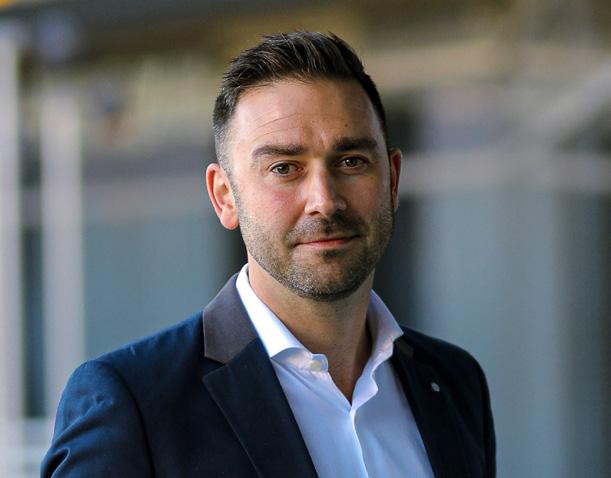
Fred Crehan Area Vice President Growth Markets at Confluent
teams to innovate without being bogged down by legacy systems or overly complicated setups.
According to David Boast, Managing Director - MENA, Endava, because these deployments have the potential to become extremely complex, most critical is the need to set robust KPIs and measurable success criteria. This is only possible when all stakeholders are involved – the C-suite to champion a ‘one-team’ approach, business heads whose teams will be the end-users of the implementation, commercial teams who will dictate budgets, risk management experts to mitigate any disruption to operations, and of course the IT teams who will implement and support each workload.
“And to avoid costly rework and infuse long term viability from the onset, it’s critical to build in DevSecFinOps, including AI, from the start. This will help ensure maximum return on investment as the organisation and its needs evolve,” he adds.
Avinash Gujje, Practice Head at Cloud Box Technologies, says when developing a multi-cloud strategy, there
are several essential steps to follow. Firstly, assess your business needs and objectives as a preliminary step to understand the purpose of adopting a hybrid cloud strategy. Secondly, select a combination of public, private, on-premise, and other forms of clouds, ensuring they are interoperable with your existing systems.
“It's also important to choose a trusted cloud provider by analyzing their specialties, such as performance, security, or other specific services your business needs. Integrating security measures, creating governance policies, and optimizing for performance and cost are essential when setting up multiple clouds,” he says.
Moreover, training and upskilling your team members is crucial to ensure business continuity, especially during any issues. Testing pilot systems before launching a full-scale deployment is also critical, as it provides enough time to refine the strategy and make necessary adjustments to optimize cost, operations, and other key metrics.
Boast from Endava says unless you love manual processes and an explosion of cost over the software development lifecycle, automation is critical. To mitigate complacency and drift, it pays to work with the operational teams to set up the right CI/CD pipelines from the start, automate testing and maintain a high degree of coverage of test cases.
“We are also seeing governance in the form of a cloud office become increasingly commonplace. This aids transparency and auditability by ensuring business benefits are measured, and changes are factored in as the landscape evolves,” he adds.
Fred Lherault, Field CTO EMEA at Pure Storage,says if we focus on the hybrid side of things, to be successful with hybrid cloud, you need to replicate the key principles of the public cloud in your onpremises environment. These principles include the ability to abstract the resources you consume from the cloud

Fred Lherault Field CTO EMEA at Pure Storage
provider, the ability to scale easily, and the ability to deploy and automate seamlessly.
“If you don't have that level of automation on-premises, you're going to end up with a service that doesn't match the efficiency and ease of the public cloud, and frankly, your hybrid strategy is likely to fail. You need to offer the same level of service, particularly in terms of automation and ease of consumption, so that users can access your on-premises service just as easily as they do with public cloud services.”
Gujje from Cloud Box Technologies says multi-cloud environments are complex, especially as they scale, because they involve coordination between multiple cloud providers, varying workloads, diverse applications, and different infrastructures.


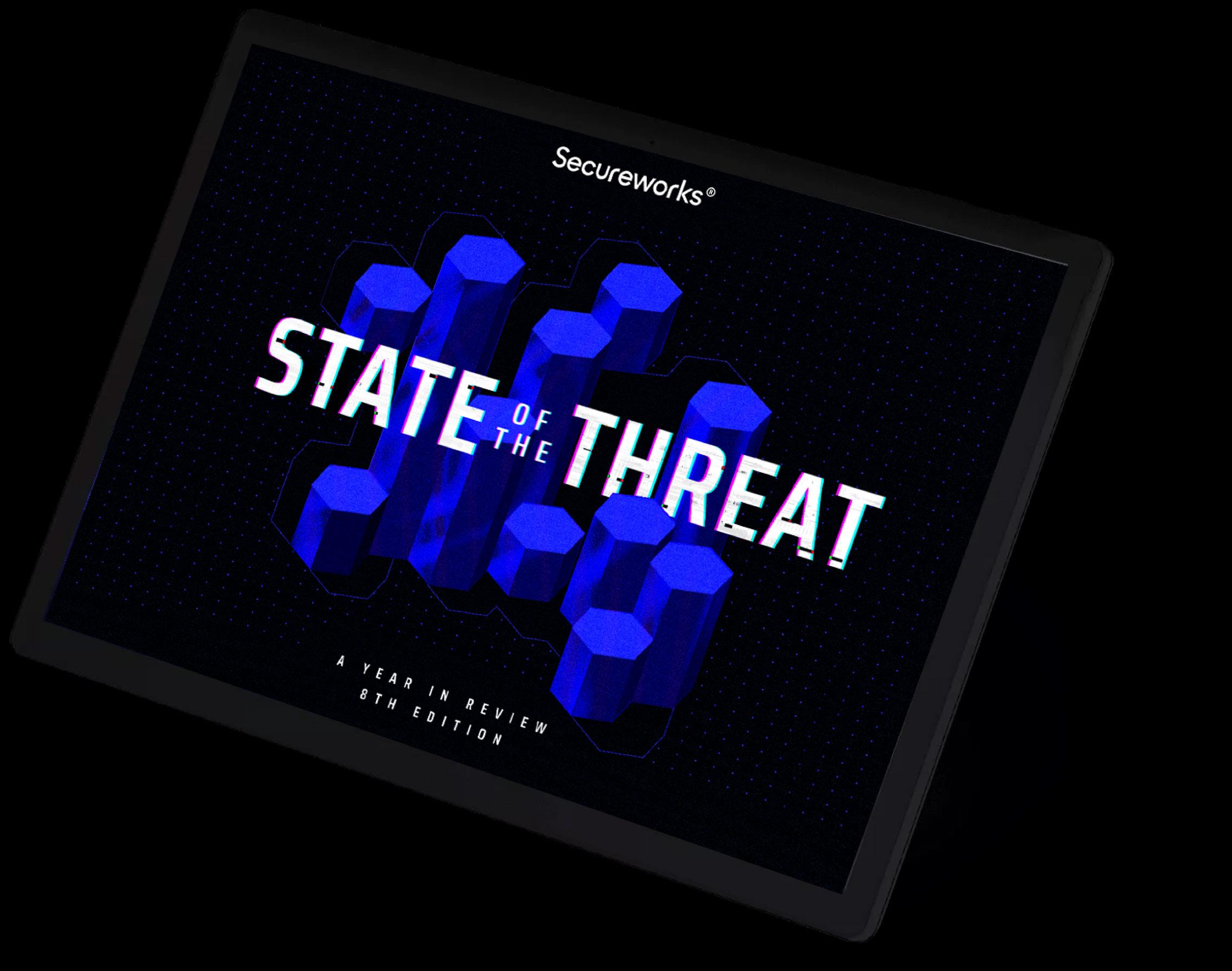


As the digital transformation wave accelerates across industries, the adoption of low-code and no-code platforms is surging.
Let’s start with some statistics: 75% of large enterprises are expected to utilize at least four low-code/no-code (LCNC) development tools for IT and citizen development initiatives this year. By 2025, 70% of new applications developed by enterprises will leverage LCNC technologies. As a result, the global market for these platforms is projected to generate $187 billion in revenue by 2030.
According to Quixy, a low-code and no-code platform vendor, the driving force behind LCNC adoption is the growing challenge organizations face in attracting and retaining software engineers. This shortage pushes companies to embrace no-code/low-code techniques to build and maintain applications efficiently.
No-code platforms empower users to create applications using a visual interface with dragand-drop functionality. Low-code platforms,
which involve minimal coding, are designed to make software development accessible to users, regardless of their coding experience. No-code platforms enable business users without coding skills to develop applications, whereas low-code platforms typically require developers with a background in coding to build more complex solutions.
HOW HAS THE ADOPTION OF LOW-CODE AND NO-CODE PLATFORMS (LCNC) CHANGED IN RECENT YEARS?
Jessica Constantinidis, Innovation Officer EMEA at ServiceNow, notes that in the age of AI and predictive text, platform intelligence has grown to better understand the context of data usage. Early low-code/no-code platforms were rudimentary, requiring significant programming knowledge for complex modifications. This was addressed through guided coding steps to ensure all necessary code was generated. However, with

Jessica Constantinidis Innovation Officer EMEA at ServiceNow
rapid AI development and its ability to understand language, tedious coding processes have been minimized, allowing for more contextual adaptation using voice input.
She adds that as organizations recognize this value, they are likely to invest in complex AI code creation. AI not only generates code but also predicts faults and corrects syntax errors to optimize code efficiency. “This is the future of the low-code and no-code era. In the gaming industry, many programmers have been replaced by AI, which can create elaborate game worlds. Programmers will still be needed to interpret the emotional and experiential aspects, but AI can handle the actual programming for rendering new virtual environments."
Omar Sheliby, Regional Manager at Liferay, adds that LCNC platforms have become central to many industries due to their agility and seamless integration. Initially, lowcode/no-code tools were used for small projects, but they have evolved into robust solutions capable of supporting diverse business needs and innovations.
With pre-built components,

Omar Sheliby Regional Manager at Liferay
LCNC platforms allow business users and IT developers to create workflows and applications without manual coding, streamlining operations and speeding up development while lowering costs.
Walid Goma, CEO of Omnix International, mentions that the rapid adoption of LCNC platforms is driven by digital transformation efforts aimed at modernizing operations and enhancing customer experiences. LCNC solutions enable swift development and deployment of applications, allowing organizations to accelerate transformation initiatives without relying solely on traditional development methods. These platforms empower nontechnical users, often referred to as "citizen developers," to create applications, significantly reducing development time and costs. For small and mediumsized enterprises (SMEs) with limited IT resources, LCNC platforms offer a cost-effective way to innovate and remain competitive.
Prasanna Rajendran, Vice President EMEA at Kissflow, highlights that LCNC has the

Walid Goma CEO of Omnix International
potential to benefit organizations across all sectors. Today, LCNC platforms support complex workflows, seamlessly integrate with enterprise systems, and incorporate AI capabilities for process creation and predictive analytics, enabling them to address sophisticated business requirements.
Moreover, security features on these platforms have matured, with advanced security, governance controls, and compliance management, making them ideal for industries like government, healthcare, and BFSI, where data security is paramount. The improved governance and control allow process owners and business users to create and manage applications that would have been difficult to achieve otherwise.
Jessica from ServiceNow says that the gaming industry is a leader in LCNC adoption, thanks to its less regulated environment, which allows for rapid experimentation. Regulated industries such as banking and healthcare, however, are taking cautious steps with smaller, humancontrolled projects. In the public sector, government entities are using LCNC on the customer/citizen app side,

Prasanna Rajendran Vice President at EMEA, Kissflow
but this tends to rely more on traditional coding than AI. Retail and telecommunications companies are also significant users of LCNC platforms, mainly to enhance digital shopping experiences and improve operations, respectively.
In general, all industries are leveraging LCNC to some degree, though complete democratization has been hindered by a lack of governance and safeguards to ensure the safe deployment of created code.
DO LOW-CODE AND NO-CODE TOOLS HELP ALLEVIATE THE DEVELOPER SHORTAGE, OR DO THEY CREATE NEW CHALLENGES?
Sheliby from Liferay points out that LCNC platforms empower non-technical users to perform developer-like tasks, such as modifying website content, building automations, or creating applications. This gives business users more ownership of their processes.
However, without proper processes in place, this autonomy could lead to chaos. Limited customization options and a lack of technical understanding may result in the development of overlapping or conflicting applications, leading to fragmented user experiences

or a dysfunctional tech stack.
OF LOW-CODE AND NOCODE
Walid from Omnix predicts that over the next three to five years, LCNC platforms will evolve from basic app-building tools into comprehensive ecosystems capable of addressing complex enterprise demands. As these platforms mature, they will increasingly become central to organizations' IT strategies. AI will play a larger role, helping with code generation, optimization, and debugging, while deeper integration with DevOps will enable LCNC platforms to support CI/CD pipelines.
Initially focused on simple apps and workflows, these platforms will expand to handle more intricate use cases. With
the rise of augmented and virtual reality, LCNC platforms will likely include features that allow businesses to create immersive experiences for training, remote collaboration, and customer engagement.
Prasanna from Kissflow adds that AI is driving the next phase of LCNC evolution, making these platforms even more powerful and accessible. AI-driven tools can now automate significant portions of development, generating code snippets or even entire applications from high-level requirements.
AI can also improve user experiences by incorporating chatbots, recommendation engines, and personalized content delivery, resulting in richer user interactions and more successful applications.










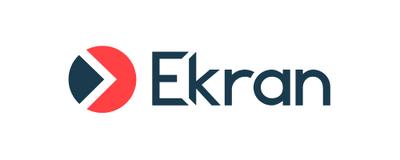




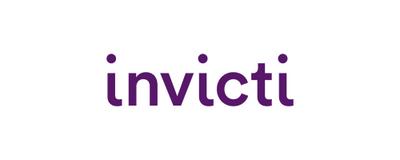





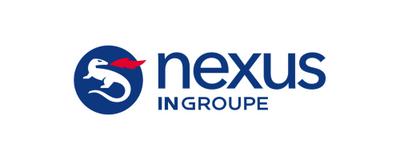












Mohammed Amin, Senior Vice President, CEEMETA, Dell Technologies, shares the company’s vision for the future of AI and IT infrastructure

HOW IS DELL HELPING ITS CUSTOMERS HARNESS THE FULL POTENTIAL OF AI AND SIMPLIFY THEIR AI JOURNEY?
GenAI is transforming our business landscape like never before. In the Gulf markets, according to McKinsey, it has the potential to deliver real value, amounting to $150 billion or equivalent to 9 percent or more of all the GCC countries’ combined GDP.
The key to success, however, isn’t in just embracing GenAI but also knowing exactly what you want to achieve with it. As the clear leader in compute and storage, Dell is at the epicenter of data-intensive technology such as AI. As the market demand for AI enabled solutions continues to climb, we help our customers capitalize on opportunities within four areas:
· AI-In, which is ensuring AI is built into our solutions and services, driving speed, intelligence and automation. We are committed to
embedding AI capabilities in our offers and services –driving speed, intelligence and automation. Currently every major product line in Dell has active work to utilize machine intelligence as a core component of a modern product or solution.
AI-On is our strategy to deliver optimal infrastructure solutions for hosting AI workloads. The Dell AI Factory is how we are delivering against that strategy by giving customers access to the industry’s broadest AI portfolio and an open ecosystem of technology partners to create AI applications that meet their unique needs through a traditional purchase or as a Dell APEX subscription.
· AI-For - we apply AI innovation, tooling and skills for Dell’s business, and this, in turn, helps us provide sage advice for our customers
undergoing their own AIfueled transformations.
AI-With - we actively collaborate with strategic partners across an open AI ecosystem to simplify the AI experience today and well into the future.
Today our solutions are helping organizations to define their AI visions and identify high impact use cases, develop comprehensive data and AI strategies, and ensure AI adoption scales seamlessly and delivers tangible results. Our recently launched Dell AI Factory and Dell AI Factory with NVIDIA gives organizations the building blocks for seamless integration of AI models and frameworks into their operations, allowing them to turn their ideas into practical applications. We are making it easier for organizations to implement AI by offering a full-stack offering – including computing, networking and software.
We also understand the world
Amin Senior Vice President, CEEMETA
Dell Technologies


of AI can feel overwhelming. Our goal is therefore to demystify AI and accelerate AI adoption, empowering organizations with knowledge and guiding them towards solutions that align with their unique needs and aspirations.
The transition from early AI to GenAI represents a profound shift from using AI as a tactical tool for specific decision-making to a powerful capability for generating content. This transformation will impact nearly every facet of industry and government worldwide.
The business possibilities for GenAI are broad, spanning many industries and many different business functions, including marketing and sales, research & development, and customer operations and support. With this, GenAI is projected to contribute $150B to the global enterprise software TAM (Goldman Sachs) and $76B in GenAI Data center infrastructure and services TAM (Tirias Research).
With all the attention GenAI has generated, many customers are trying to determine how best to generate value for their business from this emerging technology. At Dell, we have an extensive portfolio of professional services for GenAI to help customers more quickly and effectively leverage AI technology, overcome challenges and ultimately accelerate business outcomes.
By partnering with Dell, businesses can confidently advance GenAI initiatives, knowing they can rely on us every step of the way. Dell’s expertise in GenAI and underlying hardware and software runs deep. We offer full-stack solutions to support the
complete lifecycle, plus services for strategy, implementation, adoption and scaling GenAI solutions across the organization. We’re committed to empowering businesses with the tools, solutions, and training needed to thrive in the GenAI era.
Over the past few years, we have seen organizations innovate to adapt to new market realities. The top technologies supporting and driving this growth include AI & ML, multi-cloud, 5G, edge, data, and security. Today, leveraging these technologies has become crucial for our customers’ business growth, and this is where we are strongly focused. However, it is important to get the infrastructure and approach right. For example, you can't have AI or smart cities, or a telecom evolution unless you have modern compute storage and modern IT platforms.
Our recent Dell Innovation Catalyst Research, report revealed that while a majority of the organizations in the UAE and Saudi Arabia think they are well positioned competitively almost half of the respondents (51%) are uncertain what their industry will look like in the next three to five years. Nearly eight in 10 (75%) were struggling to keep pace and cited the lack of the right talent (31%), data privacy and cybersecurity concerns (27%) and lack of budget (31%) to be among the top challenges they face in driving innovation. For us, this is where we see ourselves playing a major role and is central to our growth strategy. Dell's focus has always been on adding value and engaging with regional
decision-makers, customers, and partners to support their growth with industry-leading solutions and services. Our deep, broad portfolio and capabilities are built on our ability to meet our customers’ greatest needs. Across the region, we aim to be the technology industry's most trusted advisor, offering capabilities that span strategy development, consultative services, solutions deployment, and support to help customers drive their digital transformation agenda forward.
This commitment to customer growth was reflected in our combined ISG and CSG FY25Q2 global revenue, which was up 12% year over year at $24.1 billion. In the CEEMETA region, according to IDC CYQ2, we held the lead spot in the server market (33.4%) and external storage market (31.1%) and featured among the top three in the commercial PC market (24%)
We are uniquely positioned to deliver the solutions and expertise that turn organizations’ workforce, edge, data center and cloud strategies into a single, powerful modern IT strategy. Our solutions are designed to be agile, accelerate innovation, and overcome roadblocks. Through close collaboration, we not only support but elevate organizations, empowering them to conquer even the most formidable enterprise challenges.
Furthermore, Dell has invested $21 billion in the last five years in research and development in all emerging technologies as well as in end-client solutions like PC design, and managed services. We know we have a responsibility to do all of this sustainably, valuing natural resources and minimizing our impact. We want to protect our planet and work with our customers and partners to do
the same. The actions we all take today and over the next decade will have a profound effect on how the world mitigates and adapts to climate change.
We actively support the GCC nations’ economic diversification strategies and digital transformation agenda across key sectors of growth, including banking, education, and healthcare, along with knowledge transfer and training programs. Over the last two years, we have seen a growing number of organizations take their first steps toward digital transformation. Businesses across the Gulf markets were able to harness the power of digital transformation thanks to the relative absence of IT legacy systems and the longterm strategic growth vision. We work in close collaboration with our local partners to help both the public and private sectors build agile, secure and reliable infrastructures. We do this by building the right infrastructure and modernizing their data centers that are smart, flexible and resilient. For instance, earlier in the year, we announced our plans to establish a new merge and logistics fulfilment hub in Riyadh. The new centre, which includes a second touch manufacturing facility, is scheduled to be operational by the end of 2024. It will handle all Dell product lines in Saudi Arabia, including notebooks, desktops, servers, storage and networking. This, in turn, will help manage the growing demand for Dell’s end-to-end consumer and enterprise solutions, create additional services and offerings, reduce lead
times, and enhance customer satisfaction. Additionally, Dell is moving its Flat Panel Monitor Hub to Riyadh with inventory stocked and delivered directly to customers with same-day or next-day shipments. This strategic investment plays a pivotal role in accelerating digital transformation not just in Saudi but the entire region. Additionally, investing in local talents and fostering knowledge transfer are key priorities, and we support the GCC government’s initiatives to train nationals and equip them with the skills they need to join the future workforce.
Whether supporting the modern global workforce, using technology to drive efficiency and meet climate goals or simplifying multicloud, we’re dedicated to innovation that inspires business and societal breakthroughs. The GCC markets are important to Dell’s overall growth strategy and as businesses in the region adapt to the new digital shifts, we are committed to bringing the next generation of technologies to market. We want to democratize technology, so it is vital to give our partners and customers the freedom and flexibility to continue their investment in IT infrastructure. We also continue to equip our channel ecosystem to enhance their skill sets and drive simplification of our portfolio where appropriate. This allows our partners to quickly respond to their customers’ needs and act in real time to market and workforce dynamics.
The coming decade is going to be dominated by some compelling technologies.
According to IDC, the annual digital transformation spending in the META region is projected to reach $74 billion by 2026. In addition to AI, key trends and technologies driving this change over the next decade include advancements in computing, edge, cybersecurity and multicloud.
Quantum computing promises to transform fields like cryptography, materials science, and drug discovery by solving complex problems far beyond the capabilities of classical computers. As this technology matures, it could unlock unprecedented computational power.
Similarly, edge computing is becoming essential as data generation moves closer to the source. The edge is where the vast amount of data lives and where the vast amount of AI workloads are going to run. By processing data at the edge, businesses can reduce latency and bandwidth demands, allowing for real-time decisionmaking. Many organizations will look to zero-trust architectures to better secure their environments and address potential security incidents.
In order to thrive in the digital landscape of the future, organizations must be adept at navigating these transformative shifts. We believe modernizing infrastructure, migrating to multi-cloud, building connected workforces, securing critical assets and more – are all elements that will lay the groundwork for a successful digital future. It is imperative that businesses maintain a steadfast focus on advancing innovation to achieve positive business outcomes. Any idea, big or small, can turn into innovation that improves efficiency, empowers productivity and drives growth.
The 2024 World CIO 200 Summit Grand Finale, hosted in Johannesburg and Cape Town, South Africa, set a new standard for excellence in celebrating global technology leadership.
More than 200 CIOs, CISOs, and visionaries from all corners of the world came together in a dazzling show of collaboration, innovation, and leadership, igniting the future of digital transformation like never before.Hosted by the Global CIO Forum, this summit was the pinnacle of a 50-country journey. It was a gathering of tech pioneers, the brightest minds in the industry, who didn’t just meet to talk but to redefine the future of business. Here is how it unfolded over four days.
Day zero saw guests welcomed and checked in, collecting their event badges, access passes, and merchandise in preparation for the exciting activities and networking sessions ahead. A key highlight of the opening day was the Archery Challenge 2024, powered by Sentient Archery. Over 100 CIOs participated in this thrilling test of precision and leadership, aiming to hit the bullseye and claim the title of Archery Champion. The activity not only tested physical prowess but also symbolized the sharp decision-making and accuracy required of top IT leaders in today’s fast-evolving tech landscape. This activity was sponsored by Quixy. Following the adrenaline-pumping archery competition, the day shifted to a more relaxed and celebratory tone with a spectacular tribute show, “SIMPLY THE BEST”, celebrating the greatest musical icons of all time at The Barnyard Theatre, Emperors Palace. Attendees were treated to an unforgettable performance, bringing a blend of music, entertainment, and nostalgia to close out the first day of the summit. The evening concluded with the World CIO 200 2024 Grand Finale Welcome Dinner held at the iconic Tribes African Steakhouse & Grill. Guests savored the finest in African cuisine while reflecting on the day’s accomplishments and gearing up for the summit’s key discussions and presentations over the following days.




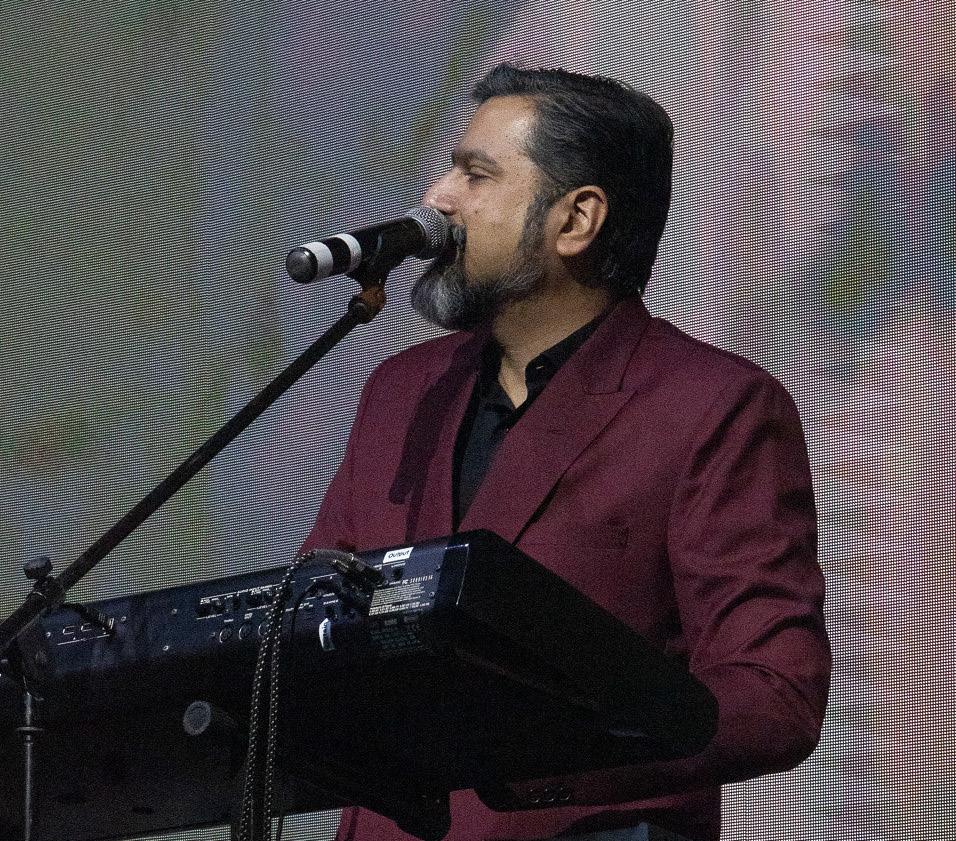

Day one of the prestigious World CIO 200 Grand Finale unfolded at the Birchwood Hotel & OR Tambo Conference Centre, marking an extraordinary gathering of global CIOs, IT thought leaders, and industry innovators. The event kicked off with an early morning Breakfast & Networking session, where attendees engaged in meaningful conversations and exchanges over coffee. The relaxed networking atmosphere set the tone for a day packed with enriching content and discussions, all centered on technology leadership and innovation.
The day officially began with a welcome note delivered by Ronak Samantaray, Co-founder and CEO of GEC Media Group, who set the stage for the remarkable sessions that followed. His welcome speech highlighted the significance of global collaboration in addressing the evolving technological landscape, emphasizing the role of CIOs as strategic enablers of digital transformation.
Jeevan Thankappan, Managing Editor of GEC Media Group, followed with an Editor’s Note, offering a deep dive into the event’s core theme and discussing how technology can transcend borders and create a global impact.
He recognized the growing importance of digital leadership in the face of emerging global challenges, reinforcing the need for innovation and collaboration.
The morning sessions continued with Charbel Zreiby, Regional Director, Channel Data Center Specialists at Dell Technologies, delivering a keynote focused on the transformative power of AI across industries and the importance of embracing AI to stay competitive in a rapidly evolving technological landscape.
His presentation was followed by the next keynote by Ricky Kej, three-time Grammy Award Winner and United Nations Goodwill Ambassador, who shared his thoughts on “Uniting Cultures, Transcending Borders.”
Sharing his journey as a musician and environmentalist, Ricky emphasized the interconnectedness of music and nature. After 13 years of producing over 3,500 commercials, he decided to stop producing commercial music and instead focus on creating music that addresses social and environmental issues.
This was followed by thoughtprovoking session by Alan McSmith, a wilderness guide from South Africa, who discussed the importance of connectivity and
being human, emphasizing the inclusion of future generations and non-human entities as stakeholders.
His presentation invited the audience to reflect on their perceptions and navigate through existential crises by facing fears and changes beneath the surface, using an anecdote from the Okavango Delta to illustrate this concept.
Ali El Kontar, CEO of Zero&One, took the stage next, emphasizing leadership and personal accountability. To foster change in an organization, leaders must be the change they wish to see in others, taking ownership of problems and actively seeking solutions. This modeling of behavior will encourage others to follow suit, improving teamwork and performance, he said.
This was followed by a presentation from Amit Veer, Founder & CEO, Coffeee.iomerchandise sponsor of the event- focused on offshoring with AI-powered tech recruitment, addressing the global tech talent shortage, particularly in industries like software engineering. He highlighted the key benefits of offshoring, especially to India, which offers a large pool of skilled tech professionals at lower costs, 24/7 operations, and no language
barriers.
The presentation from Raif Abou Diab, Country Manager - South Gulf & Sub Saharan Africa at Nutanix highlighted the significance of Nutanix's hybrid multi-cloud platform and its role in simplifying IT environments.
The key message is that Nutanix enables organizations to run applications and data across various environments, including on-premises, private, and public clouds, with a unified platform.
The afternoon kicked off with a sumptuous lunch and networking session, allowing attendees to connect further and reflect on the discussions from the morning.
Following lunch, the Leadership Masterclass was led by Dr. Antoine Eid, founder of Meet YourSelf, which is the world’s first science-based workplace DNA
assessment and reporting tool that combines three key scientific areas together to deliver the most comprehensive and applicable results for performance at the workplace.
In the evening, the spotlight turned to the much-awaited Ambassadors Meet, an inviteonly session that brought together ambassadors of the World CIO 200 2024 initiative. The exclusive gathering fostered deep discussions on leadership challenges and opportunities, with ambassadors sharing their experiences in driving technological advancements across various industries.
As the day transitioned into night, the event’s grand Gala Dinner commenced, starting with an opening note by Richa S, Chief Commercial Officer of GEC Media Group. The dinner provided a perfect blend of celebration and recognition, highlighted by a stellar performance from Manoj George, an internationally renowned violinist and music composer, alongside Ricky Kej, whose uplifting melodies symbolized the spirit of positivity and cultural diversity. The event continued with the Ambassadors Recognition ceremony, where outstanding global leaders were honored for their exceptional contributions to the GCF community and the broader IT industry. This was followed by the presentation of the GCF Preferred Partner Awards, recognizing key partners who played a significant role in advancing the goals of the Global CIO Forum.

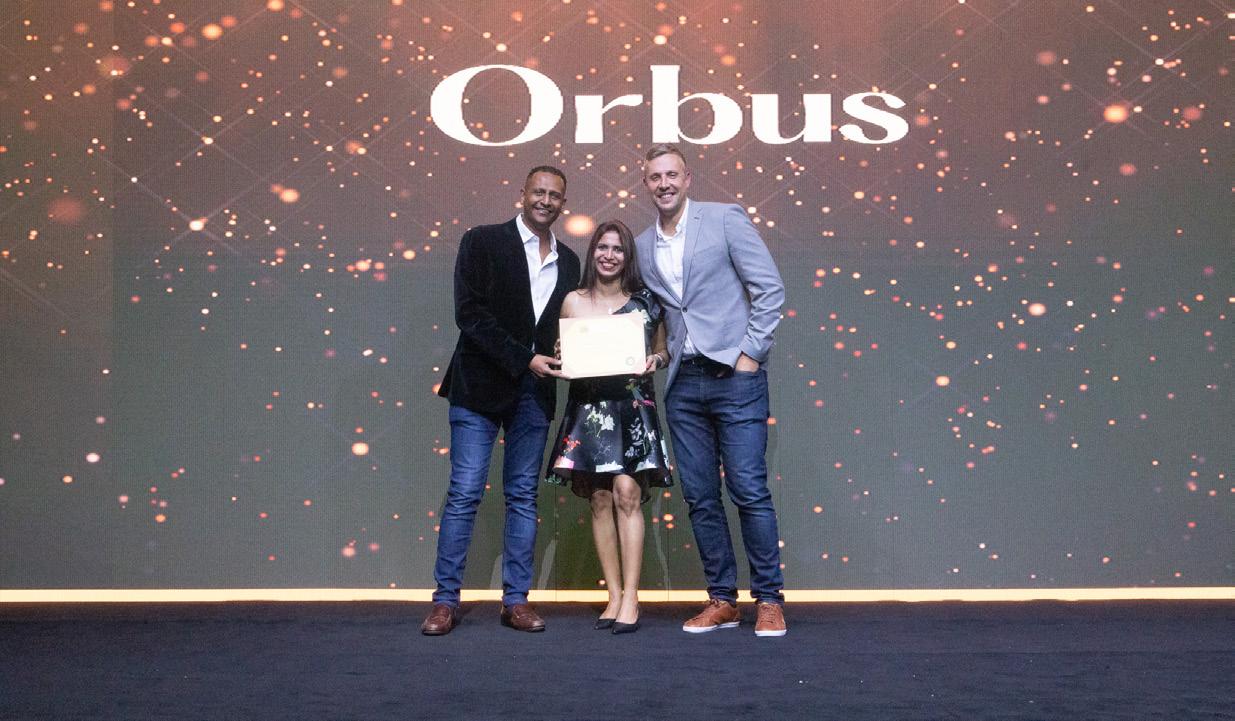


The day commenced on a serene note with a Mental Wellbeing Program led by world-renowned Yoga Guru Sumit Manav. His session, titled “Mindful Meditation – An Inward Journey,” focused on nurturing mental wellbeing, a vital aspect for today’s leaders. In a world driven by fast-paced technological change, Sumit emphasized the importance of grounding oneself through mindfulness, enabling leaders to manage stress and maintain a sense of balance in their personal and professional lives. The participants were guided through meditation techniques aimed at fostering clarity and focus—qualities essential for navigating complex decisionmaking processes.
Venkatesh Mahadevan (Venki), Board Member of CaaS, delivered an insightful opening address titled “Moving the Needle” through storytelling and realworld examples of transformation. He highlighted key examples from around the world, emphasizing the power of accessibility, collaboration, and innovation in driving change.
Venki inspired the audience to identify ways in which they can "move the needle" in their respective fields, stressing that even a single idea can create

significant change.
He encouraged a mindset of collective action and innovation, asking leaders to consider their roles in shaping the future, especially with innovations like AI and ChatGPT. He closed with a powerful reminder: "Do not die with the music inside your head," encouraging the audience to share their ideas and foster innovation rather than holding them back.
The address was a mix of humor, inspiration, and deep reflection, leaving the audience motivated to take action and create lasting change in their organizations.
The morning session featured a lineup of influential speakers sharing thought-provoking insights:
• Mohammed Abdul Hadi, Director of Enterprise Infrastructure Solutions at StorIT Distribution, delivered the Partner Keynote, highlighting the future of enterprise infrastructure and the evolving role of technology in driving growth and operational efficiency.
• Aphiwe Qhama Menziwa, Founder of Tembisa Ratanga, took the stage with an inspiring talk titled “A Place of Hope,” where he shared the
story of how his organization is transforming lives in disadvantaged communities, showcasing the power of technology in driving social change.
• Mayuresh Kothari, Technical Director at Secureworks, provided a keynote focusing on cybersecurity and the growing challenges of protecting digital ecosystems in an increasingly interconnected world.
• Jayakumar Mohanachandran, CRO of CaaS Research, shared his insights on “AI Foresights and Outlook 2024-25,”offering a glimpse into how artificial intelligence will shape industries and redefine the future of business. His insights provided valuable context for CIOs as they plan for AI integration into their operations.
The technological landscape took center stage as thought leaders shared groundbreaking insights:
• Gautam Nimmagadda, CEO of Quixy, introduced “The Power of No-Code Platforms for Seamless Applications.” His talk underscored the efficiency and agility that no-code platforms offer for businesses
to rapidly develop and deploy applications, reducing dependency on traditional development cycles.
• Rajeev Dutt, General Manager of SwissGRC, joined virtually for a session titled “GRC for Strategic Excellence and Operational Resilience,” shedding light on how governance, risk, and compliance solutions are integral to building
Later in the day , Sumit Manav returned to the center stage to captivate the audience with a second session, “Your Path to Lifelong Wellbeing.” Building on his earlier meditation program, Sumit offered actionable tips for embedding mindfulness practices into daily routines, empowering leaders to achieve sustained mental clarity and physical vitality.
The last of the morning’s partner keynotes was delivered by Caryn Vos, Senior Manager of the Crypto Division at Altron, who said the company has become a trusted leader with a full stack of solutions that bring centralized security controls, policies, and compliance

into heterogeneous and dynamic hybrid cloud environments
The highlight of the afternoon was a Leadership Masterclass led by Haragopal Mangipudi, the founder of guNaka, renowned keynote speaker, and author. The session, specifically tailored for CIOs, delved deep into the complexities of modern leadership.
The event concluded with a

reflective session led by Anushree Dixit, Global Head at GEC Media Group, where she recapped the highlights of the forum and discussed the future outlook for the CIO community. Her talk served as a call to action for all attendees, inspiring them to implement the knowledge gained over the course of the forum to shape the future of their organizations.
Anushree also hosted the highly anticipated Day 2 Lucky Draw, adding an element of excitement to the closing moments of the event.
With the formal proceedings concluded, attendees prepared to depart from the hotel to catch their flight to Cape Town. This marked the beginning of the next chapter of their journey as leaders, armed with insights, connections, and strategies gained over the course of the Global CIO Forum.




The final day of The World CIO 200 2024 Finale unfolded in Cape Town with a dynamic blend of excitement, exploration, and celebration, offering attendees an unforgettable experience that encapsulated the spirit of innovation, adventure, and connection.
The participants took part in the Harley Davidson Chauffeur Rides. This thrilling experience allowed guests to discover the scenic beauty of Cape Town from the seat of legendary Harley Davidson motorcycles, alongside vintage cars, which offered a nostalgic yet exhilarating touch to the journey.
As the riders roared through Cape Town’s picturesque routes, braving the rain, the energy was palpable, and the scenic beauty of the Cape left an indelible mark on everyone. This high-octane adventure provided a unique and memorable way to immerse in the natural splendor of the region, blending adventure with exploration.
Following the excitement of the morning rides, attendees were treated to a serene and indulgent picnic and wine tasting at the renowned Simons Restaurant located at Groot Constantia, one of South Africa’s most iconic wine estates. The afternoon was marked by relaxation, where participants savored a selection of fine wines while enjoying gourmet delicacies in the peaceful ambiance of the vineyard. Surrounded by lush landscapes and centuries-old winemaking traditions, the wine tasting offered a luxurious pause in the day’s activities, giving everyone a chance to unwind and relish Cape Town’s culinary and viticultural excellence.
As the day progressed, attendees were given some well-deserved leisure time, allowing them to relax, explore Cape Town further, or reflect on the week’s transformative discussions and experiences. This break provided a personal moment for attendees to recharge before the evening’s
highly anticipated events.
The highlight of the evening was the electrifying session featuring husband and wife adventurers Chris and Julie Ramsey, who shared their experiences from their pole to pole expedition in an EV.
Their talk, titled “Charged for Change: The Electrifying Journey of Chris and Julie Ramsey,” delved into their passion for adventure and sustainability, showcasing how they had overcome challenges along the 17,000 mile route.
In every way, the final day was a fitting conclusion to The World CIO 200 2024 Finale, blending adventure, relaxation, insightful discussion, and celebration. The day left participants with a profound sense of community and a shared commitment to innovation and transformation in the tech world. The finale will be remembered not only for its high-profile speakers and engaging activities but also for the inspiration and connections it fostered among the global CIO community.



19 NOV
Sean Hinton, Founder of SkyHive, on how the company’s Quantum Labor Analysis is transforming the global transition from job-based to skill-based model.
HOW DOES QUANTUM LABOR ANALYSIS, DEVELOPED BY SKYHIVE, REVOLUTIONIZE WORKFORCE ANALYSIS, AND WHAT IMPACT HAS IT HAD ON THE TRANSITION FROM JOB-BASED TO SKILL-BASED MODELS GLOBALLY?
Transitioning to a skill-based model requires a much more granular and rapid view of the labor market than traditional data sources. All the players in the labor market—employers, educators, governments, and workers—need up-to-date intelligence on the ways skills are changing and how they can respond.
SkyHive’s Quantum Labor Analysis methodology involves collecting and analyzing millions of real-time labor market data points, including job postings, CVs, patent applications, and traditional government labor data. It is the most powerful knowledge graph of jobs, skills, training, labor market, and related intelligence in the world.
With this unifying view of skills, Quantum Labor Analysis gives all the players a view of the labor market that they can actually act upon and allows them to all speak the same language (skills).
Another major advantage of Quantum Labor Analysis is that it allows much more rapid responses to changing skills. One of our clients, a company shifting from bricks-and-mortar to other forms of retail, was able to use skills intelligence to understand the transferrable skills in its workforce and redeploy 20% of their staff–a much more efficient and less traumatic outcome than firing current workers and finding new ones.
As a recognized leader in AI and the future of work, what key trends do you foresee shaping the global job market in the coming years, particularly in relation to AI and technology?
One major trend that is widely misunderstood is that AI will take over tasks more than it takes over jobs. An IMF report concluded that 40% of jobs worldwide will be affected by AI, either through automation of specific tasks or the emergence of new skills needed to collaborate with these advanced systems. So, workers
will need to understand what tasks are being automated, what skills are becoming more in demand, and how to be upskilled/reskilled in those areas.
Ironically, the need for human skills is increasing: new data from SkyHive by Cornerstone shows that human skills like communication and problem solving are three times more in demand in the MENA region than technical skills. This signals that no matter what tasks may be automated, there will still be a need for people to collaborate and make use of the opportunities that may arise.
Another major trend that is highly relevant to Massar Al Ghurair (an initiative that aims to bridge the gap between education and employment by providing Emirati and Arab youth with personalized skills guidance and jobmatching services) is the fact that 37 percent of entry level jobs will see high levels of change because of AI, according to our research. Many of the tasks entry level workers do, such as research and summarizing documents, can be done by AI. So young people entering the workforce have a special stake in learning how to work alongside AI.
HOW HAS YOUR EXPERIENCE AS A BOARD MEMBER AND INVOLVEMENT WITH ORGANIZATIONS LIKE THE OECD FUTURE OF WORK TASK FORCE AND THE GLOBAL PARTNERSHIP ON ARTIFICIAL INTELLIGENCE INFLUENCED YOUR APPROACH TO LEADING SKYHIVE AND DRIVING INNOVATION IN WORKFORCE RESKILLING? In both cases, working with these organizations brought home the vast scope of the changes that will come to everyone who is in the working population globally. We are truly in the midst of the Fourth Industrial Revolution, and it will affect how everyone works and learns.
This has reinforced my view that the world needs a Skills Passport: a central source for every worker that sums up what they know, what they can learn, and where they can go in their careers. The changes will be too sweeping for our current

SEAN HINTON, Founder of SkyHive
hit-or-miss job market. If we’re going to ensure the world gets the benefits of AI without the possible disasters, then people will need a road map for how to keep up with change. With technology like Skills Passport, workers can not only keep up but thrive in this new environment. Another lesson I’ve learned is how vital it is that AI be implemented ethically and responsibly. Good AI depends on the data it’s “trained” with, which needs to be as unbiased and comprehensive as possible. AI systems trained on biased data can carry over existing human prejudices into the new AI, or even make them worse, with a major impact on hiring decisions. That’s why we need to ensure we’re using “glass box” AI, where the decisions are transparent and understandable to humans. In addition, we could face grave privacy problems. The giant datasets AI systems need access to function often include vast amounts of personal data. We need to ensure this data is collected, stored, and used in a way that respects individual
privacy and dignity.
HOW DOES THE MASSAR AL GHURAIR PROGRAM UTILIZE AI TO PROVIDE PERSONALIZED CAREER PATHWAYS FOR EMIRATI AND ARAB YOUTH?
Massar Al Ghurair uses SkyHive by Cornerstone’s Skill Passport technology to extract the unique “Skill DNA” of users from the CV and their own input about their skills and interests. With this information as a baseline, our AI identifies other skills the person might have, based on the job profiles of similar workers and the experiences they’ve had in the past. We use this to identify possible career pathways, recommend training to close skill gaps, and match users to jobs. Our use of AI and real time labor market data is a groundbreaking approach to helping youth understand their current skills, potential, and how to get where they want to go in their careers.
Massar Al Ghurair assists youth in multiple ways:
• Mapping Skill DNA: Users can upload their CVs and have AI instantly generate
their Skill DNA, clearly showing their current capabilities, including skills gained through unconventional means like community activities or freelance work.
• Identifying skill gaps: The platform helps users identify the skills they need to move into specific roles and connects them with educational institutions in the UAE or online courses to close those gaps.
• Career pathways and job matching: Massar Al Ghurair matches users with jobs in the UAE and provides insights into emerging roles across the GCC region, allowing workers to futureproof their careers.
• Supply and demand data: The platform’s AI-driven insights go beyond the present, offering forecasts on how specific roles will evolve, such as whether AI skills will soon become essential for project managers.
DOES THE MASSAR AL GHURAIR PROGRAM AIM TO ADDRESS IN BRIDGING THE GAP BETWEEN EDUCATION AND EMPLOYMENT IN THE UAE AND BROADER MENA REGION?
The most important challenge in the UAE and MENA is the same as it is globally: people don’t know how to connect skills with their career journey. Too often workers and learners don’t know their own personal skills gap— the difference between the skills they have and the skills they need to move ahead. Even if they have this information, they are on their own in understanding where to learn these skills and apply them in their career.





Nedal Al Zatari, Chief Commercial Officer, Fine Hygienic Holding, shares how values and continuous development shape success at Fine Hygienic Holding
YOU’VE TRANSFORMED FINE SOLUTIONS’ REVENUE SIGNIFICANTLY. WHAT LEADERSHIP QUALITIES DO YOU BELIEVE WERE MOST CRUCIAL TO ACHIEVING THIS GROWTH?
Over the past 17 years, I’ve transformed Fine Solutions’ revenue by fostering a culture of shared vision, unwavering belief, and collaborative teamwork. A clear direction, coupled with a deeprooted desire to achieve it, is essential. However, true success lies in bringing people together towards a common goal. By building a strong team that shares our vision, we’ve been able to achieve remarkable growth and overcome challenges. This approach has been the cornerstone of Fine Solutions’ success and continues to drive our progress.
CAN YOU SHARE A SPECIFIC INSTANCE WHERE YOUR STRATEGIC THINKING LED TO A SUCCESSFUL COMMERCIAL OUTCOME FOR FINE HYGIENIC HOLDING?
I believe every decision and plan should start and end from the customer we are serving. In the B2B business it is all about the customer. We went to the market, studied it, understood the challenges customers face, and we came up with solutions. An integrated process was then implemented from the factory to the sales representative serving the customer, including management, marketing, finance, supply chain and more. With this strategic approach we managed to win customers.
We built Fine Solutions (FS) based on 3 key pillars:
Everything starts from and ends with the customer. The challenge of the customer is that hygiene is a cost, we always work on reducing their running cost. We at FS came up with the concept of serving the customer and help them to improve hygiene levels whilst reducing cost. As we reduce cost while delivering top-notch quality, the customer base tends to grow.
We don’t sell just tissues; we deliver a whole range of solutions that will help our customers maintain high hygiene standards and at the same time reduce cost. The solutions include providing customers with the right kind of tissue, right dispensers, right packaging and more.
We are here for a long-term partnership concept. Not hit and run. This mindset and approach have
enabled us to grow.
IN TODAY’S DYNAMIC MARKET LANDSCAPE, HOW DO YOU APPROACH DEVELOPING AND IMPLEMENTING SUCCESSFUL COMMERCIAL STRATEGIES AT FINE HYGIENIC HOLDING?
I embrace a philosophy of “sustainable growth culture”, which means that for any business to thrive it must be both sustainable and profitable. Growth must be sustainable, and for that to happen our strategy revolves around our customers and consumers. The first point of contact with them is our sales team, making it essential to instill a mindset of sustainable growth. We achieve this through three key steps:
• Learning: Continuous growth requires continuous learning. We cultivate a culture of ongoing learning and improvement, drawing insights from various resources, including market dynamics.
• Execution: What we learn, we apply swiftly. In the FMCG industry, speed is critical. Our sales team must execute promptly, always prioritizing customer needs.
• Career growth: Successful execution leads to career growth and rewards. Through a structured internal program, we align the goals of our shareholders with those of the sales team, driving motivation and excellence. This approach has fostered successful career advancements and cultivated a culture of continuous improvement.
When it comes to Fine Solutions, our growth occurs in two dimensions across the countries we serve:
• Customer base expansion: We are consistently growing our customer base, committed to serving businesses of all sizes.
• Product portfolio expansion: Since Fine Solutions' inception, we’ve continually expanded our offerings. Initially, we provided facial tissues and toilet rolls, quickly followed by hand towels, napkins, soaps, and sanitizers. We’ve successfully implemented this strategy across various markets, adapting to local conditions while staying true to our core principles.

NEDAL AL ZATARI Chief Commercial Officer, Fine Hygienic Holding
Balancing environmental responsibility with business success is a challenge many companies face. How has your previous work experience and your leadership at Fine Solutions helped you achieve this balance?
As a mechanical engineer with a passion for continuous learning, I have always sought to balance environmental responsibility with business success. My early certification as an energy manager in the Middle East in 1996 demonstrated my commitment to sustainable practices. I initially implemented energy-saving measures at Fine Solutions, focusing on cost reduction while prioritizing environmental impact.
Our innovative solutions, such as SteriPro and WetPro, have not only reduced costs for our clients but have also contributed to environmental preservation. By partnering with FSC-certified suppliers, we ensure that our products support reforestation efforts. Our commitment to
environmental consciousness has been instrumental in securing multiple accounts.
One example of how we prioritize environmental responsibility while serving our clients is our development of a disintegrating hand towel for airlines. This solution addressed a critical issue for a regional airline, enabling them to avoid costly flight disruptions. Despite the initial investment required to modify our production processes, we were determined to provide this innovative solution.
Another example is our development of Autocut hand towels, which significantly reduced consumption for a customer facing excessive waste. This solution, implemented years before it became commonplace, demonstrated our commitment to finding sustainable alternatives. We apply a similar approach to all our products, including chemicals and soap. While initial costs may be a concern, we emphasize the long-term
benefits of reduced running costs. By prioritizing environmental responsibility, we have not only strengthened our business but have also made a positive impact on the planet.
HOW DO YOU APPROACH PERSONAL DEVELOPMENT, AND HOW DO YOU BELIEVE IT HAS CONTRIBUTED TO YOUR SUCCESS AT FINE HYGIENIC HOLDING?
I firmly believe in the importance of continuous self-improvement. To achieve my goals and inspire others, I actively seek out opportunities to learn and evolve. I am committed to learning from everyone, regardless of their age, experience, or background. This approach has led me to pursue additional courses in sales, accounting, finance, marketing, and now AI and digital media. I firmly believe that understanding our customers and consumers is essential to our success.
One of Fine Solutions' key advantages is our deep understanding of the market. We have an intimate knowledge of our customers and their needs, enabling us to provide tailored solutions. This close connection is a cornerstone of our success.
While my professional skills and market knowledge are important, I believe that my core values are equally essential. I firmly believe that true values are tested when they require personal sacrifice. These values form the foundation of my aspirations and guide my interactions with others. I am committed to passing on these values to my children, family, friends, and employees.
At FHH, we prioritize caring for our team and fostering a culture of risk-taking, personal development, and support. This approach aligns with my belief in coaching and mentoring young people, empowering them to reach their full potential.
Oracle has maintained a strong presence in the Middle East, contributing to the growth and digital transformation of various sectors. As industries across the region embrace technology to drive modernization, Oracle's tailored cloud and AI solutions are becoming increasingly integral to these efforts. In a conversation with Mike Sicilia, Executive Vice President of Oracle Global Industries, we explore the role of AI and cloud infrastructure in transforming industries.
ORACLE HAS A STRONG, LONG-STANDING PRESENCE IN THE MIDDLE EAST. WHICH SECTORS IN THE REGION ARE SHOWING THE MOST GROWTH POTENTIAL FOR ORACLE?
If I look at the region in general, I would say construction and healthcare are two major sectors. In Saudi Arabia, for example, the construction market is booming and we’ve long been a large provider of cloud-based construction solutions. For many years, Dubai was a major hub for growth, and now we’re seeing a similar trend in Saudi, Bahrain and Oman.
Healthcare continues to present significant growth opportunities, especially as we move beyond electronic health records into areas like personalized medicine and genome sequencing. The next frontier in healthcare is using genome sequencing and AI capabilities to develop targeted medications for individuals.
Another interesting development is the construction of large-scale data centers across the region. The power consumption needs for these data centers are enormous, as Larry Ellison mentioned. So, our utilities business—energy and water—will play a key role. Data centers require both energy and water for cooling, as traditional cooling methods struggle to keep up with the demand. This presents an opportunity for our energy and water customers to become not just customers but partners because it’s impractical to rely solely on the existing grid for such massive AI data centers. Local generation will be necessary, and with the Middle East’s abundant natural resources, I expect the utilities sector will grow significantly, particularly driven by the needs of data centers.
Retail is also growing, and I can't think of any sector that isn’t expanding. The world needs to modernize and transition to cloudbased systems quickly. Maintaining outdated technology is becoming increasingly expensive, and it poses a higher cybersecurity risk. There are many groups out there that would like to target these old systems to disrupt daily life in various parts of the world. All of these factors present
excellent growth opportunities across sectors. In fact, I can't think of a single sector that isn’t promising right now.
One of the biggest differentiators that Oracle has, particularly in the construction sector, compared to our hyperscaler competitors, is that while they are delivering infrastructure and analytics, they are not delivering ERP systems designed to handle retainers, which are essential for managing how construction companies get paid. Our construction cloud, on the other hand, manages the entire project lifecycle. For example, in a large-scale project like NEOM, it handles the scheduling of what needs to be done and ensures that all change management and change orders are documented. It also tracks payments for general contractors and subcontractors. It’s a comprehensive system designed specifically for the construction industry.
In healthcare, we offer electronic health records (EHR) solutions. When a patient visits a doctor, our system acts as the system of record for that visit. We are the largest custodian of electronic health records in the UAE by a significant margin. Our offerings are mission-critical, operating technologies—not just extensions of an analytics layer or something similar.
The healthcare business continues to be incredibly exciting. We've just released two new general availability products. One is our clinical digital systems, the first completely AIpowered module for Cerner, which automates many routine tasks during patient-provider interactions. Historically, the complaint has been that providers—doctors, nurses, and others— spend too much time typing on keyboards to

MIKE SICILIA
Executive Vice President of Oracle Global Industries,
document visits, medications, and order labs. AI changes all of this. We use ambient listening technologies to capture and transcribe conversations, breaking them down and automating routine tasks so that the doctor, nurse, or provider only needs to approve the summary we've generated, with no need to manually input data.
We're very excited about the power of AI and its broader applications. Additionally, our healthcare business is closely tied to our OCI (Oracle Cloud Infrastructure) business. As we expand data centers globally, currently with 162 data centers—public, private, and customer-specific—it gives us a unique opportunity to grow our healthcare offerings to
both large and small countries. We can build a data center that is economically attractive for smaller countries or modern cities aiming to digitize healthcare. A significant barrier to healthcare digitization has been the cost of infrastructure to maintain sovereignty over personal health information. However, with our approach, the technology and applications work together to create economically viable solutions.
ORACLE IS ALSO RAMPING UP ITS SOVEREIGN CLOUD OFFERINGS. IS THIS A KEY PRIORITY FOR MIDDLE EAST GOVERNMENTS?
We're working on a variety of e-government capabilities, including agriculture management, digital identification, and
healthcare management. I’ll be attending the World Government Summit in Dubai next February, and we will certainly have more to share about what we're doing for government initiatives.
Regarding AI and Gen AI, will you be customizing these solutions for each industry vertical, or will they be standardized across all sectors?
You have the generally available large language models out there, and we've done some edge development to make our generative AI services work in healthcare. We've focused on ensuring that these models understand medical lexicon, terminology, and undergone extensive testing. The next phase isn’t about customizing the models; rather, we're providing a springboard for our customers to use their data to enhance inferencing, retrieval, and minigeneration tasks. This is where I believe the 'secret sauce' lies for our customers.
Using healthcare as an example, large language models have consumed vast amounts of publicly available information, which is great for automating routine tasks. However, when you consider AI as a clinical diagnosis assistant, helping doctors identify symptoms or diseases, it requires access to data not publicly available— such as personal health information. This data is stored within large healthcare organizations and governments around the world.
So, it's not about customizing the model itself, but rather providing a service that offers the vector database necessary to vectorize the model, conduct inference, and integrate that back into our vertical edge applications. I believe this is the next frontier for applied AI.
Christopher Murphy, Managing Director, FTI Consulting, and Koroush Tajbakhsh, Director of Cybersecurity – ME, at FTI Consulting, on the power of proactive management.
As businesses of every size and industry capitalize on the benefits of rapid technological advances, cyber attackers are simultaneously refining their methods, launching increasingly sophisticatedattacksonostensiblysecurenetworks. Cyber threats manifest themselves in various forms, including data breaches, ransomware, and Distributed Denial-of-Service (DDoS) attacks, yet they all have the capacity to disrupt operations, inflict long-lasting reputational damage, and cause significant financial losses through business disruption and regulatory penalties.
The magnitude of cybercrime is staggering, with global costs projected to exceed $23 trillion by 2027, according to top cyber officials. In 2023 alone, the average cost of a successful cyber-attack has surged to $4.45 million. These statistics underscore the urgent need for a paradigm shift in how organizations approach cybersecurity.
The modern business environment necessitates a cybersecurity strategy that adapts to an everevolving threat landscape. With the adoption of cloud computing, artificial intelligence, and the Internet of Things (IoT) into business operations, there is a critical need to transition from basic vigilance to a proactive model centered on building cyber resilience.
Organizations that are ill-prepared for cyber incidents often find themselves overwhelmed while grappling with containment, activating backups, coordinating with stakeholders, and navigating legal requirements. Given all of these moving parts, it is increasingly advantageous for organizations to partner with a single trusted provider, capable of managing the entire incident response process end-toend. This approach aligns with the current trend of consolidating cybersecurity services and moving away from a fragmented provider landscape.
Moreover, as the following evaluation of the

CHRISTOPHER MURPHY
Managing Director, FTI Consulting
three key stages of cyber incident response reveals, it is essential for organizations to have a trusted provider assess their entire cybersecurity environment and its risks before a threat becomes a reality, not afterwards.
In a world of expanding regulatory compliance and enforcement surrounding cybersecurity, it is imperative for organizations to adopt robust protocols that ensure they do not become the lowest hanging fruit for malicious actors. These protocols help lay the foundation for continuous cybersecurity posture improvements by uncovering security gaps and providing mitigation strategies to address them.
Risk Assessment & Management involves identifying key assets, risks, and vulnerabilities in critical data, systems, and services. This includes mapping out legal and regulatory compliance requirements and reviewing third-party and supplier contracts to ensure cybersecurity and privacy provisions are included.
Incident Response Planning must be comprehensive, detailing protocols for internal

Check Point Infinity Platform delivers AI-powered and cloud-delivered cyber security across your entire enterprise: network, cloud, and workspace
Dubai World Trade Centre Booth B20, Hall 24 14-18, October 2024



CHECK POINT SOFTWARE TECHNOLOGIES MIDDLE EAST infogcc@checkpoint.com www.checkpoint.com

KOROUSH TAJBAKHSH
Director of Cybersecurity – ME, FTI Consulting
and external stakeholder notification processes and requirements. This should be a collaborative effort involving all relevant parties within the organization.
Training & Collaboration is an essential component of preparedness. Regular training ensures staff are aware of potential attacks and understand their legal implications. Collaboration between employees and the company’s IT and security teams is vital to maintaining alignment on cybersecurity policies. Building cyber resilience is a collective responsibility that requires ongoing engagement and education.
Moreover, organizations must evaluate their cyber insurance needs and assess whether current policy coverage is adequate for all potential cost scenarios. Similarly, cybersecurity due
diligence is necessary for potential and current vendors and third parties to ensure robust security and privacy clauses are embedded into contracts.
Effective incident response requires seamless coordination between IT, legal teams, and executive leadership to navigate both legal and operational challenges. The dynamic nature of cyber incidents necessitates a single trusted incident response provider that responds efficiently and orchestrates an expedited recovery.
Before activating the response plan, it is crucial to verify the plan’s immediacy and to ensure legal and compliance aspects are managed by legal counsel. Clear engagement strategies are pivotal, and should include coherent internal messaging,
strategic external notifications, and a plan for liaising with law enforcement if required. Response activities should align with privacy regulations, and notifications should be managed appropriately by legal counsel to ensure compliance with any regulatory requirements.
Post-incident reflection is crucial for recovery, legal compliance, risk mitigation, and managing potential repercussions. This phase must be led by executives and legal counsel, ensuring collective responsibility and organizational learning. Legal compliance and evaluation efforts should focus on ensuring compliance requirements are met, documentation evidence is prepared for regulatory scrutiny, and a thorough debrief is conducted to update policies and procedures. External providers can assist in determining the incident’s root cause, fortifying systems against future attacks, and updating training programs based on lessons learned. Ensuring data privacy through strengthened protection measures and updates to privacy policies is equally critical.
Taking a strategic approach to cyber resilience from the outset is fundamental to helping organizations rebuild a more secure and resilient environment. Proactive management serves as an effective countermeasure against cyber threats, positioning an organization for a more resilient future.

Kamel
AI, blockchain, IoT — in the Middle East, there is no shortage of examples to illustrate the breadth and depth of digitalisation. Like soil nutrients in a growing garden, the digital economy grows on these technologies. Businesses know this. Governments know this.
Across the region, economic diversification has long been pursued as the means to futureproof prosperity. As part of their Vision programs, GCC governments have initiated schemes to turbocharge industries using emerging tech — schemes like Saudi Arabia’s National Industrial Strategy and the United Arab Emirates’ Operation 300bn. But they have also published whitepapers and guidance notes on specific technologies like AI — such as Saudi Arabia’s National Strategy for Data and AI, Qatar’s National AI Strategy, and the UAE’s National Strategy for Artificial Intelligence 2031.
But everything hinges on connectivity. Barely a modern use case can be implemented without the Internet, and in the 2020s this means the global Internet. The Middle East is a primary corridor for intercontinental connectivity, all underpinned by subsea cabling. In the region, every government and every business relies on the operability of the Red Sea corridor.
Currently, much of the growth in interconnection bandwidth in the region is sourced from Europe, despite an increase in local internet content caching. Intra-regional connectivity rates on the other hand have remained relatively stable. The Middle East faces unique challenges related to data transport costs and the complexities of regulatory and geopolitical environments. These factors have sometimes posed hurdles for global network providers when considering the termination and transportation of traffic within the region.
Some 90% of communications between Europe and Asia passes through the Red Sea cable system, then on to land-based networks between Egypt
and the Mediterranean, bypassing Suez and the GCC. Telecom Egypt has done a commendable job in delivering the diverse terrestrial links between the Red Sea and Mediterranean Cable Landing Stations. However, when we look at the Red Sea approaches leading to Suez, we do not see the same level of spatial diversity. The capacity of Red Sea systems is significant and unmatched by alternative routes. However, following February’s maritime tensions in the area, three cable systems which were impacted took over six months to be recommissioned — offering a striking reminder of just how much of an endeavour it can be to repair these critical cables.
Thus, we see an urgent need for the building of diverse terrestrial routes to bypass the Red Sea. These overland systems would act as new corridors chaining together the Mediterranean with the GCC, Arabian Sea, and Indian Ocean. This infrastructure would do much to stimulate digital economies in Dubai, Riyadh, and Jeddah, via interconnection hubs in places like Muscat and Salalah, that would bridge undersea and terrestrial systems. These new super-corridors could follow either a southern route across the Arabian Peninsula or a northern one traversing either Kuwait or Iraq and then Türkiye.
Among the new infrastructure will nestle data centres — some legacy, some new — that will connect subsea cable systems from Asia, East Africa, and Europe to new overland corridors across the Gulf and the Arabian Peninsula. The design of these network interconnection hubs will play a crucial role in reaping the economic potential of the emergent infrastructure. The new terrestrial diversity will serve the entire international community. The global digital economy, along with all its governments, businesses, and citizenries, will feel the effects. But before service providers can guarantee uptimes and latency levels, stakeholders from governments to cabling organisations will need

KAMEL AL-TAWIL Managing Director – MENA at Equinix
to address some challenges. There is ongoing discussion within the industry about the limited availability of open and competitive backhaul services between cable landing stations and data centres in the Middle East. This situation is influenced by regulatory complexities and presents challenges for the development and expansion of diverse terrestrial systems in the region. Additionally, while there are some exceptions, the region has relatively few carrier-neutral colocation facilities, which are often preferred by subsea cable
operators and consortia due to the broader choice of terrestrial carriers they provide. This presents a need for a widespread shift in mindsets. Carrier-neutral data centres not only present a greater choice of carrier. By hosting subsea system terminations, they also replace cable landing station backhaul with simple physical cross-connects. As we might imagine, this dramatic reduction in complexity brings with it significantly lower costs in bridging subsea and terrestrial systems. Overcoming subsea-
terrestrial interconnection costs will be an essential step in building viable super-corridors.
Private and public stakeholders need to be of one mind on the concept of terrestrial supercorridors. This implies, of course, that they share the financial commitment. Investment is needed in terrestrial network infrastructure and interconnected data centres to deliver super-corridor capacity that can rival that of legacy subsea routes and other global interconnection hubs. Regional telcos must join forces with data centre operators, and each must commit to an ongoing evolution of these partnerships as new capacity needs arise.
Resolution of tensions in the Red Sea may be beyond the capabilities of the regional business community. But out of this adversity, we may act to preserve the region’s hardwon economic prosperity and to futureproof its growth. Egypt, Iraq, Jordan, Oman, Saudi Arabia, the UAE, and many others have a role to play in encouraging the development of terrestrial cabling infrastructure. Their digital economies can benefit from being part of a global communications hub.
Economic diversification is the priority of every visionary government in the Middle East. But progress is built upon infrastructure. The credited father of economics, Adam Smith, wrote in his Wealth of Nations about the importance of wellmaintained roads, canals, and navigable rivers for transporting goods and services. We can think of intercontinental cabling as the roads and rivers of our modern economy, and the wealth of our nations is at stake.
Adam Smart, Director of Product - Gaming, AppsFlyer, writes about AI’s role in maximizing the value of winning marketing content.
Many pressures have been heaped on the shoulders of the region’s marketing teams. Consumers and governments are demanding privacy and international brands are delivering it. Apple introduced ATT into iOS. And over the coming months, all the major browser brands will deliver a post-cookie reality that will be a further blow to GCC campaign designers. As market circumstances remove arrow after arrow from the advertising quiver, we must look to one of the last things over which we have control. We must look to the intrinsic quality of content.
Experience will tell you that a creative winner will outshine other ads as the sun outshines a candle. This is because winning content goes beyond mere performance. It is scalable, and that makes it a great ROI generator. Now imagine introducing artificial intelligence to this ecosystem. While an exciting prospect, we must lay strong foundations if AI is to work as anticipated. What follows are four steps to spotting winning content and using AI to scale up its reach as never before.
SPOT THE WINNER
Before we get to the “eureka” moment, let’s review the creative cycle. You start by researching the market – audience and competitors – and reviewing any past campaign data you may have. You craft a message based on your findings. You come up with metrics that allow you to assess the impact of the live campaign. You test different content with audiences. You redirect resources to the apparent winning formula. You then repeat the process to ensure only winners are out in the field.
Throughout the cycle, downstream KPIs such as retention rates, lifetime value (LTV), or return on ad spend (ROAS) can tell a story and identify which content is surpassing other contenders in terms of volume, performance, reach, and profitability.
EXPLOIT THE WINNER
Next, keep an eye on winners to identify limits
in their audience appeal. Expand to wider markets, other platforms, and new geographies to stretch the scalability of the content. Keep stretching and polishing to extract all possible value from the content. Consider localisation through voiceovers, subtitles, or text changes. Be prepared to change the size, aspect ratio, video length, or overlay elements to fit different channels.
Even when the winner has had its day in the sun, review its winning elements – tone, style, aesthetic – so you can duplicate them. Well-designed metrics will show hook rate, hold rate, and completion rate. How do these metrics stack up against other content? While recombining these elements into a future winner, we should not assume that the topranked elements from different winners will fuse into some unbeatable uber-winner. A winning hook from one well-performing video may not work with the central message or end cards of another. Combos must be tested against the same metrics as previously, such as those that discern universality and scalability. Finally, find ways to name your different approaches to make them easily identifiable.
You have been very patient up to this point, refraining from throwing AI into the mix as a fix-all. But now that you have pinned down the fundamentals, you can turn to more advanced technology like ChatGPT and Midjourney, which are powerful matches for the marketing function. AI can flip how you assess creative content. Using advanced computer vision, high-end analytics solutions can break down a video frame by frame and layer by layer to detect engagement drivers. And natural-language processing (NLP) enables categorisation of user responses into actionable insights.
By looking at factors like viewing duration and how different parts of the content elicit different user reactions, AI can enable deep understanding of elements’ contributions to overall performance. NLP can also assume a role

ADAM SMART Director of Product - Gaming, AppsFlyer
in creative optimisation, adding localisation, narration, subtitles, and scene classification – all of which are laborious and lengthy processes when done manually. When working in conjunction with a mobile measurement platform (MMP), AI allows the more frequent creation of winning strategies at scale, especially if those strategies have been thoughtfully categorised as described in Step 2.
Metrics such as click-through rate (CTR), interaction per mille (IPM), and delivery percentage will help you spot performance deterioration early. When fatigue occurs, fall back on the variants you created during Step 2. Rinse and repeat.
You will notice that adoption of AI in the regional marketing space is not a reinvention of the
wheel but more of a levelling of the road itself. We stick to our best practices – research, measurement, testing – to spot our winners and then let AI scale their effectiveness to previously unseen levels. When winners look like they are budget drains, don’t give up on them until you have reviewed ROAS and determined where the content is most effective and why. It is imperative that winners are allowed to reap as much value as possible before being decommissioned. And never forget to take the winning elements of an end-of-service campaign and integrate them into new ones.
The GCC is the ideal region to explore localisation opportunities for content. Localisation may be key to both performance and scalability, so be sure to measure the effectiveness of each localisation iteration and do not be afraid to experiment until you get traction. Then, as with other strategies, continue monitoring and tweaking to keep it fresh. If the groundwork has been laid diligently, there will be a toolbox of variants ready to go when you see early signs of content fatigue.
AI’s role is a facilitator and scaler of what marketing teams have been doing for decades – crafting messages to fit audiences, and then adjusting those messages after performance assessments that leverage predesigned metrics. AI’s unprecedented power to deliver timely insights and automation can elevate the entire marketing function. AI can be a co-author of winning content. No reinvented wheels – just smoother roads. At last, marketing teams will be able to capture imaginations at will.
Anti-fraud needs to be focal point of the Middle East's AI — real time payments nexus, says Damon Madden, Strategic Solution Consultant – Fraud, MEASA, ACI Worldwide.
The Middle East and artificial intelligence (AI) share a special relationship. The region is home to the world’s first AI ministry, in the United Arab Emirates. It is a hot zone of adoption and innovation, and economic predictions for AI’s impact are eye-catching. According to a recent McKinsey report, in the GCC region, an estimated US$150 billion could be added to combined GDP — some 9% of the regional economy — with a qualification that generative AI could inject even more growth and inflate the projections. PwC’s Strategy& agrees, surmising that the GCC could see just under US$10 of economic growth for every US$1 invested in generative AI, amounting to a regionwide US$23.5 billion a year by 2030.
This AI growth will happen amid another growth spike. The Middle East has become the fastest-growing market for real-time payments, according to the 2024 Prime Time for Real-Time report from ACI Worldwide. The region witnessed year-on-year growth in transaction volume of 33.6% in 2023. Some 855 million real-time payment transactions were recorded, and this figure is expected to reach 3 billion by 2028, a five-year CAGR of 28.5%.
These two trends of real-time payments and AI are set to converge. And while this will no doubt have immense potential to unlock value for individuals and businesses, if not managed properly, it could also result in damage to public trust in both arenas. Oman, Kuwait, and Qatar debuted their national real-time payment platforms last year, joining earlier launches by Saudi Arabia, Bahrain, and the UAE. As regional transaction value hurtles towards the trillion-dollar mark (US$903 billion by 2028), the global financial ecosystem will certainly benefit. But just as real-time payments boost economies and enhance financial inclusion, they present opportunities for others who do not have our best interests at heart.
Legacy payment systems took days to process transactions, which allowed institutions more time to discover fraud. Real-time payments are great for the customer experience but also raise security challenges that are exacerbated by the speed and volume of transactions initiated, by fraudsters’ use of generative AI, and by the rush of enterprises to integrate real-time payment options as part of their digital transformation strategy. Interestingly, the very AI that intensifies the threat from fraudsters allows defenders more options to prevent illegitimate real-time payment transactions.
Saudi Arabia, having launched its sarie system only in April 2021, is already seeing a myriad of scams — investment, fake billing, remote access, identity theft — targeting customers of all ages. According to ACI Worldwide’s Scamscope 2023 report, the value of losses to Authorised Push Payment scams in Saudi Arabia is expected to increase by an annual compound rate of 26% between 2022 and 2027.
Middle East financial service industry (FSI) entities that integrate real-time payments must overcome a series of challenges. Take identity theft. Synthetic identity fraud is easier with AI, so in the spirit of “set a thief to catch a thief”, AI is the ideal tool to counter it. But to do so effectively requires an abundance of granular, high-quality data. The accuracy of AI models is determined by a range of factors, but most of them are data-related. With too few data points or too many inaccurate ones, the results will be too inadequate to stand as an effective countermeasure to fraud.
Fraudsters also need data to be effective, so the other side of the data challenge is the protection of personal information. A criminal can not only use the data they find to impersonate a banking customer but can also sell that information to others on the dark web for a handful of dollars per record. Anti-

fraud has therefore become a battle between FSI entities and their criminal adversaries over who has the best data for training their AI models. Remember that a real-time payment transaction is not subject to rollback, so there is now more pressure to build models capable of making the right decision in real time.
The data requirements mean that global payments companies that have been operating for decades will have a significant advantage. The more established a payments company is, the more data it can leverage through its payments orchestration platform in the fight against fraud. When sitting on billions of historic transactions worth trillions of dollars, an institution is in a better position to combine data depth with breadth and apply sophisticated AI and machine learning (ML) to spot patterns and adapt/evolve. Such an organisation is better able to
spot anomalous behaviour using methods such as behavioural biometrics, where AI examines the mouse movements and typing and touch patterns of a user.
Behavioural biometrics allows continuous authentication of users without any extra security demands being placed upon them, thus providing a seamless frictionless payment experience. In a region where slick digital experiences are increasingly regarded as the minimum requirement of excellent customer service, banks and other FSIs gain a lot through AI. Front of house, they are delighting customers; backstage, they are beating the fraudsters at their own game. With enough high-quality data and the right AI tools, financial institutions can go beyond real-time fraud prevention and anticipate future criminal campaigns.
One hardly needs to draw a graph to visualise the drop off in effectiveness of AI-based anti-fraud systems as the
scale and available budget of the bank decreases. Small and mid-sized banks are going to be vulnerable unless they partner with global payments processors that have the scale of data and the sophistication in AI to be effective against criminal elements.
Central payment infrastructures have a vested interest in protecting the payment rails. As the central point of transaction processing, they must ensure security to maintain trust, prevent fraud, and support the overall stability of the financial system. Payment companies have a stake in preventing fraud, too, and to that end will be only too happy to partner with any scale of bank to see the job done.
As time goes on, and the right partnerships form, all institutions will gain much more than the means to protect their customers from fraud. They will also gain monetizable customer insights. Greater volumes and higher accuracy of data will help banks identify macroeconomic and market trends, paving the way to new business opportunities, new products, and new services.
The parallel rise of AI and real-time payments (and their intersection) in the Middle East is a double-edged sword — a boon to the customer experience but a bane to those entrusted with customer data. Integration of AI into security operations enables FSI entities to snuff out the flames of fraud before the house catches fire. And if the right partners team up, this can happen at scale to enable a happier future for all — except the fraudster.

Get a sneak preview of what top-tier vendors will be unveiling at the region's premier technology showcase.
SolarWinds will exhibit at booth H8-C15, alongside its value-added distribution partners in the region — CyberKnight and Spire Solutions. The company is spotlighting cutting-edge advancements in its full-stack observability portfolio, comprehensive database management solutions, and AI-powered IT service management software.
SolarWinds enables companies to manage increasingly complex hybrid and multi-cloud environments to accelerate digital transformation, drive automation, modernize applications, and undertake cloud migration initiatives. The company has further enhanced its solutions through the unified SolarWinds® Platform, providing customers with AI-powered full-stack observability and database, service management, security, and automation capabilities. These solutions are designed to identify and remediate issues and improve service delivery, reliability, and productivity — all while reducing costs.
“The past 12 months have been transformative for the region’s IT sector. We’ve witnessed AI strategies mature from intent to implementation, cyber threats grow in scale and sophistication,
and a continued surge in cloud adoption. At SolarWinds, we offer powerful solutions that enable organizations to successfully navigate these trends. GITEX allows us to align our offerings precisely with the needs of the local market,” said Abdul Rehman Tariq Butt, regional sales director, Middle East at SolarWinds.
Artificial Intelligence (AI) and Multi Cloud innovation that is geared to solve complex business challenges in every industry, and help acecelerate the UAE and wider Middle East’s AI economy will be the key focus for Oracle at GITEX GLOBAL 2024.
Celebrating its 35th Year of supporting the UAE’s growth ambitions with latest digital technologies, Oracle will showcase a comprehensive portfolio of AI solutions including next gen cloud applications on a best-in-class AI cloud infrastructure and state-of-the-art generative AI innovations.
“This year, at GITEX, we celebrate 35 years of supporting the UAE’s growth ambitions with state of the art local cloud infrastructure, latest cloud technologies, developing top talent, and expanding our local presence”, said Nick Redshaw,
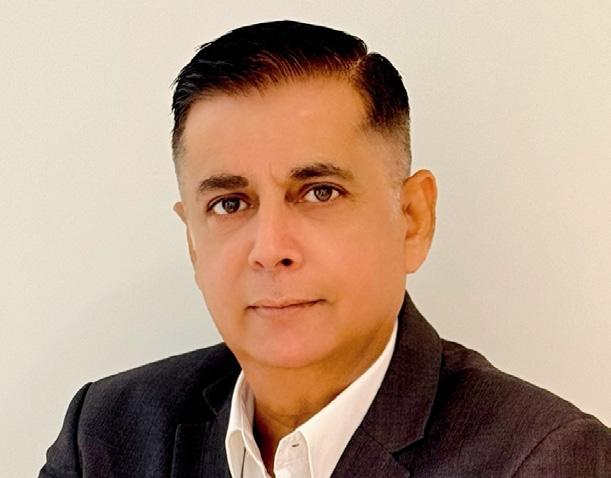
Akashdeep Singh Cheif Strategy Officer at Tech First Gulf
senior vice president – Tech Cloud, Middle East and Africa, and UAE country leader, Oracle.
“The UAE’s leadership has set forth an inspiring vision in the AI era, and we are yet again ready to support national aspirations with powerful AI innovation from Oracle. At GITEX GLOBAL 2024, our customers, partners, and visitors will experience enterprise ready AI solutions and innovative multi cloud solutions to drive unprecedented innovation and achieve seamless cloud interoperability.”
At GITEX 2024, TFG will highlight innovations in AI, cloud storage, and emerging technologies. Our focus is on empowering business partners by providing access to cutting-edge technologies that drive enterprise transformation and foster regional growth.
Akashdeep Singh, Chief Strategy Officer at Tech First Gulf, emphasized the transformative impact of digital technologies on the MEA & I regions, which are rapidly emerging as digital leaders. "AI is at the forefront of this transformation, creating new opportunities and business models across various industries. At TFG, we are committed to leading this charge with our comprehensive portfolio of AI-

Harish Chib VP Emerging Markets, Middle East and Africa, Sophos
driven solutions such as Pure storage, Commvault, Seceon, Group-IB to name few, designed to deliver significant benefits and foster innovation across all sectors."
Visitors to the TFG stand will be captivated by a range of advanced technologies displayed on a stunning, large-scale screen. You'll have the opportunity to explore solutions from industry-leading vendors such as Samsung, Alcatel, Logitech, Commvault, Pure Storage, H3C, Group-IB, and many more. These vendors will present their latest innovations, highlighting their dedication to driving progress and excellence in the industry.
Cloudflare will present its latest suite of products and solutions that help businesses regain control of their technology and security environments, by reducing complexity and improving visibility across their on-premises, public cloud, SaaS and public Internet domains.
At GITEX 2024, Cloudflare will demonstrate how its technologies are reshaping the landscape of digital infrastructure and security. The company will spotlight the connectivity cloud, a state-of-the-art solution designed to enhance connectivity

Rami Beidas
Country General Manager for KSA at
NTT DATA
and optimize performance for enterprises across the globe. This AI enabled platform offers unparalleled visibility, reliability, security, privacy and speed by leveraging Cloudflare’s extensive global network that spans 330 cities in over 120 countries. Bashar Bashaireh, RVP Middle East and Türkiye at Cloudflare, commented on the company’s commitment to the region: “Today, everything needs to be connected to everything everywhere, all the time. This hyperconnectivity creates new challenges related to security, performance, resilience and privacy. As the world’s first connectivity cloud, Cloudflare helps connect and protect millions of customers globally. Everyone from individuals to the world’s largest enterprises use our unified platform of networking, security, and developer services to succeed in the everywhere world.”
This year, Nutanix will highlight its commitment to delivering cloud freedom through innovative solutions, including strategic partnerships and groundbreaking technologies.
Raif Abu Diab, Country Manager - South Gulf & Sub-Saharan Africa at Nutanix comments,
“Nutanix is dedicated to helping customers accelerate their digital transformation. Our solutions simplify the deployment and management of hybrid multicloud infrastructures, ensuring scalability, flexibility, and cost efficiency. We are committed to supporting organizations in navigating today’s digital-first world.”
“GITEX is a crucial platform for us to connect with the vibrant technology community in the Middle East. We look forward to showcasing our latest innovations, strengthening relationships with customers and expanding our ecosystem by building on current partnerships and forging new connections with local technology firms,

Vice President, Middle East, Turkey, Africa at VAST Data
testing and seamless integration of our AI models. We aim to ansure ensure these innovations act as a force multiplier while addressing critical concerns such as data privacy, ethical considerations, and misinformation. Furthermore, we frequently share the results of our AI models, that enables an environment for continuous development and responsible growth of AI technologies,” said Harish Chib, VP Emerging Markets, Middle East & Africa, Sophos.
cloud providers, and channel partners.”
Nutanix will be exhibiting at Hall 6, stand #C10 for the ninth consecutive year, welcoming alliances and partners from across the Middle East to share a unified go-to-market message. As part of its alliance strategy, Nutanix is keen to showcase its collaboration with Dell Technologies to deliver new joint solutions that enhance hybrid cloud strategies for customers. This partnership reinforces Nutanix’s mission to provide comprehensive, customercentric solutions that address the diverse needs of the market.
At GITEX Global 2024, Sophos
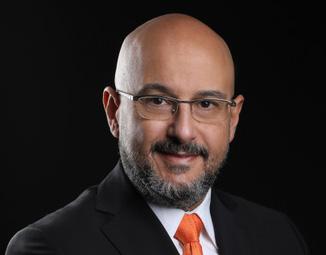
MEA, UiPath.
Sophos will join its partner Starlink at GITEX Global, located in Hall 1, Stand A20.
Delinea will present a comprehensive suite of identity security solutions, including Vault, Secret Server, Privilege Manager, and-our latest advancements in Cloud Infrastructure Entitlement Management (CIEM) and Identity Threat Detection and Response (ITDR). Our solutions are designed to secure privileged
will highlight its latest innovations, including the Sophos Managed Detection and Response (MDR) service. This fully managed service that combines human expertise with advanced technology to detect, investigate and respond to cybersecurity threats. It also provides continuous 24/7 monitoring and proactive threat hunting to minimize the impact of attacks.
“As a global cybersecurity company, we are excited to support organizations at this year's GITEX Global, where the theme focuses around Artificial Intelligence. We are dedicated to delivering cutting-edge AIdriven security solutions, with a strong commitment to careful

access, enforce least privilege policies, and address identityrelated threats. Use cases will cover protecting hybrid cloud environments, automating identity lifecycle management, and simplifying compliance. The solutions are aimed at improving security, reducing risk, and meeting regulatory requirements amid a complex threat landscape.
“At GITEX 2024, our central theme is comprehensive identity security. We will highlight solutions such as Vault, Secret Server, Privilege Manager, and

Bashar
Bashaireh RVP Middle East and Türkiye at Cloudflare
the latest advancements in Cloud Infrastructure Entitlement Management (CIEM) and Identity Threat Detection and Response (ITDR).
“Our focus will be on securing privileged access, enforcing least privilege policies, and addressing identity-related threats. Visitors will have the opportunity to explore use cases related to protecting hybrid cloud environments, automating identity lifecycle management, and simplifying compliance— all aimed at enhancing security and mitigating risks,” said Art Gilliland – CEO at Delinea.
At GITEX 2024, VAST Data is presenting its Data Platform, Data Engine and the latest additions to it, all of which are designed to support scalable, secure, and efficient data and AI operations.
“Our demos on the booth will showcase how our technology empowers enterprises to manage AI infrastructure with unmatched performance. Alongside key partner collaborations on-site, we’ll demonstrate end-to-end solutions that are transforming industries like finance, healthcare, life sciences, media and more. GITEX 2024 is our biggest GITEX

Abdul
Rehman Tariq Butt Regional Director - Middle East at SolarWinds
yet, we've doubled the scale of our presence as we build more interest and relevancy with enterprise organizations across the region,” said Haider Aziz – Vice President, Middle East, Turkey, Africa at VAST Data.
He added: “This year we’re focused on helping enterprises and hyperscalers unlock the full potential of AI. Our goal is to support next-generation AI data initiatives, enabling realtime insights from structured and unstructured data. We’re going to be doing alot with our ecosystem partners, helping organizations offer clear guidance on assembling AI solutions, now the emphasis of AI projects are now more on enterprise deployment than just purely research-based. This year, we’ll share more on our soon to be revealed exciting product announcements from Cosmos, and we're hosting several thought-provoking discussions on bringing enterprise AI to the masses.”
The UiPath booth at H4-C20 will be our headquarters during GITEX activities, and will host a wealth of presentations and demos showcasing how AI-powered automation supports the public sector, retail, the BFSI sectors,
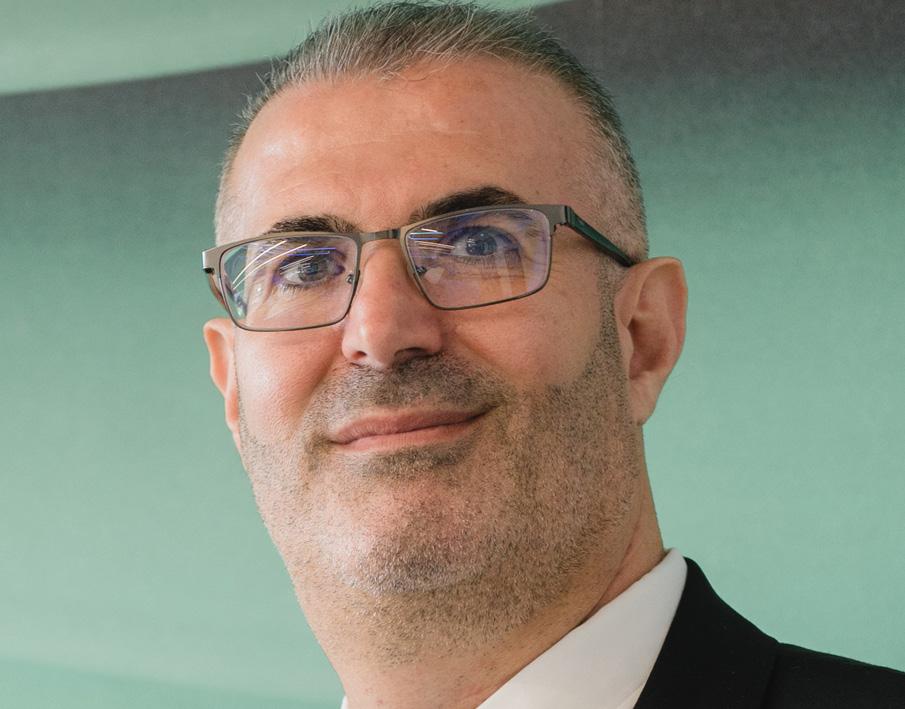
Raif Abu Diab
Country Manager - South Gulf & Sub-Saharan Africa at Nutanix
and more.
During this keynote speech, UiPath Founder and CEO Daniel Dines will share UiPath’s vision on Agentic AI, a type of AI that doesn’t just follow rules but is capable of problem-solving and is more spontaneous and proactive. Attendees can expect demonstrations of UiPath Autopilot™ for various roles, such as Developers and Testers, as well as deep dives into the capabilities of UiPath Test Suite, UiPath Document Understanding, and more.
“We’re staying close to this year’s GITEX theme of "Global Collaboration to Forge a Future AI Economy,” with a booth where we will offer demos and deep dives that will showcase the transformative power of ‘AI at Work’. AI shows a lot of promise in terms of increased productivity, efficiency, and innovation. However, based on our experience working with more than 10,000 customers globally, we believe that anything AI can do – AI and automation can do better. As a leader in enterprise automation and AI, we're committed to empowering organizations across the public and private sectors with the technology that will allow them to thrive in an AI-dominated paradigm,” said Ashraf El Zarka, Regional Vice President, MEA, UiPath.
The "Middle East IT Industry Foresight 2024 - Education" report from CaaS Research examines the significant technological advancements reshaping the education sector in the Middle East.
Highlighting insights from extensive surveys and contributions from C-level executives, this report emphasizes the pivotal role of digital learning platforms, cybersecurity, and digital literacy in the evolving educational landscape. The findings suggest that digital technologies will be integral in transforming educational practices, enhancing learning outcomes, and ensuring the security and preparedness of both students and educators. The report aims to guide educational institutions through the complexities of digital integration, encouraging strategic investments in technology and innovation to foster an inclusive, innovative, and secure learning environment.
The shift towards digital learning platforms in the Middle East marks a significant leap in educational methodologies. This section explores the adoption of Learning Management Systems (LMS), online classrooms, and other advanced educational technologies. The integration of these platforms has revolutionized the teaching and learning dynamics, enabling more interactive and personalized learning experiences. The
report highlights the importance of robust infrastructure and comprehensive training for educators to leverage digital tools effectively. It also addresses the challenges of widespread adoption and provides insights into the current state of digital learning integration across various educational institutions. Recommendations focus on increasing investment in digital infrastructure, expanding mobile app functionalities, and leveraging AI for advanced feedback analysis to enhance learning outcomes.
The COVID-19 pandemic necessitated a swift transition to remote learning, significantly impacting the education sector. This section examines the effectiveness of remote learning methods, the tools and platforms utilized, and the challenges faced during the transition. It highlights the success and adaptability of educational institutions in implementing remote learning, despite various challenges such as access to technology and internet connectivity. The report emphasizes the need


for ongoing investment in technology and infrastructure to support remote learning and collaboration. Recommendations include enhancing technology access, providing comprehensive training for educators, and developing robust support systems to ensure the sustainability and effectiveness of remote learning practices post-pandemic.
Personalized learning, driven by data analytics and adaptive technologies, is transforming
the educational landscape in the Middle East. This section explores how educational institutions are leveraging data analytics to tailor learning experiences to individual student needs and preferences. The report examines the extent of data analytics usage, strategies for understanding student performance, and the implementation of adaptive learning technologies. It addresses the challenges of balancing technological advancement with data privacy concerns. Recommendations focus on enhancing data analytics implementation,
expanding adaptive learning technologies, proactively addressing privacy concerns, and diversifying learning approaches to cater to diverse student needs. By integrating these strategies, educational institutions can significantly improve personalized learning outcomes.
As digital technologies become more embedded in education, cybersecurity and digital literacy have become critical concerns. This section delves into the current state of cybersecurity measures within
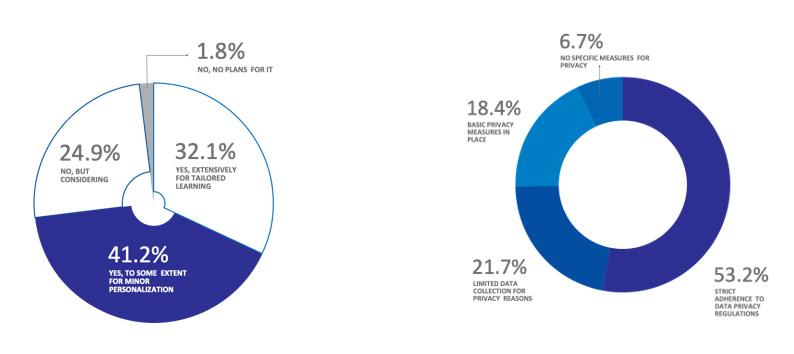
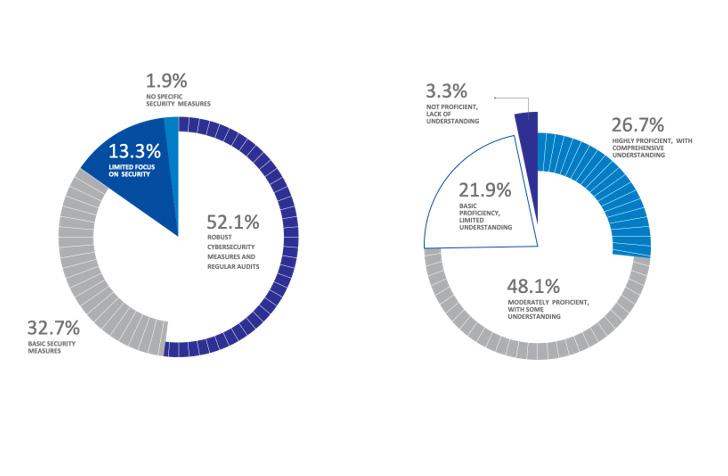
educational organizations, the extent of cybersecurity training, and the proficiency levels in digital literacy among learners and educators. It highlights the importance of robust cybersecurity frameworks and comprehensive digital literacy programs to ensure the safety and preparedness of the educational community. The report recommends strengthening cybersecurity defenses, expanding cybersecurity training programs, boosting digital literacy initiatives, prioritizing online safety education, and embedding digital literacy across curricula. These measures are essential for protecting against digital threats and preparing students for the digital age.
The report forecasts significant growth in the integration of digital technologies within the
Middle East's education sector. By 2025, the widespread adoption of digital learning platforms, AI-driven personalization, and advanced data analytics is expected to revolutionize educational practices. This digital transformation promises to enhance learning outcomes, improve operational efficiency, and secure a competitive advantage for educational institutions. The forecast emphasizes the importance of strategic technological adoption, continuous investment in infrastructure, and fostering a culture of innovation and flexibility. Educational institutions that effectively navigate these changes will lead the industry into a new era of digital education, characterized by enhanced engagement, personalized learning experiences, and robust cybersecurity.
The "Middle East IT Industry Foresight 2024 - Education" report underscores the critical role of digital transformation in the education sector. Embracing digital learning platforms, integrating advanced technologies, and prioritizing cybersecurity and digital literacy are essential for staying competitive and meeting evolving educational demands. The report concludes that strategic adoption of digital innovations will shape the future landscape of education, offering significant opportunities for growth and improvement. Educational institutions that invest in these technologies and foster a culture of innovation will be well-positioned to lead the market, ensuring resilience and excellence in the digital age. This transformation is key to enhancing educational outcomes and preparing students for a future driven by digital advancements.

Chris De Vere
EMEA Managed Service Provider (MSP) Leader
CAFU announced the appointment of Amit Rawal as its new Chief Product and AI Officer. Amit Rawal joins CAFU with a distinguished background, having held leadership roles at top technology companies such as Apple, and worked with innovative startups around the world. As Chief Product Officer, he brings his expertise in AI-driven solutions to lead the development of CAFU’s cutting-edge products. Under his leadership, CAFU aims to elevate the customer experience by integrating advanced technologies, driving innovation, and reinforcing its commitment to providing seamless, on-demand vehicle services.
A former Stanford Fellow and AI professor at Stanford University, Amit brings over 20 years of experience in leading digital commerce businesses and developing AI-driven products and technology platforms across four continents. His extensive expertise has ideally positioned him to drive CAFU’s innovation agenda, advancing seamless connectivity and delivering next-generation solutions that redefine convenience for customers.

Mohammed Almutair General Manager for KSA, Shaffra
Shaffra, a deep tech company in the Middle East pioneering AI-driven workforces and metaverse workplace solutions, has appointed Mohammed Al Mutairi as the new General Manager for Saudi Arabia. With over 30 years of experience in business development and project management across influential sectors, Mohammed has a proven track record of driving growth and innovation. He began his career at Saudi Airlines, leading sales operations in the Eastern Province for 24 years before joining Khusheim Industrial Group as Business Development Director, where he built strategic partnerships to foster growth.

Fadi Moubarak Vice President for Sales and Channels in the Middle East, Africa and Central Asia.
Avaya has appointed Fadi Moubarak as Vice President for Sales and Channels in the Middle East, Africa and Central Asia. Based in Dubai, Moubarak is a 34-year IT industry veteran, and has been with Avaya for over 10 years, having previously led the company’s channel business in the EMEA and APAC regions. During that time, he successfully evolved Avaya’s channel programs and cultivated relationships so that Avaya partners could better serve customers’ experience transformation requirements while protecting their own business growth.
With extensive knowledge of the region he now leads, and as part of Avaya’s reimagined go-to-market strategy, Moubarak will work with local customers and partners to help them drive business growth through delivering outstanding customer and employee experiences.



























